#also every major civil battle in the last century
Explore tagged Tumblr posts
Text
A Pragmatic and surprisingly comforting perspective about the Trump 2nd Presidency from the ACLU
***Apologies if this is how you found out the 2024 election results***
Blacked out part is my name.




I’m not going to let this make me give up. It’s disheartening, and today I will wallow, probably tomorrow too
AND
I will continue to do my part in my community to spread the activism and promote change for the world I want to live in. I want to change the world AND help with the dishes.
And I won’t let an orange pit stain be what stops me from trying to be better.
A link to donate to the ACLU if able and inclined. I know I am
#us politics#donald trump#election 2024#aclu#a promise to myself#how is this comforting you May ask#bc we are not fighting alone or uninformed#we have good and strong groups in our corners defending what we believe in#it’s not over yet#we have to try and pushback#added Alt image descriptions since this is leaving containment#happy to see many engaging with this to either donate time or money or both#really warms the cold heart of mine#wow this broke containment#overall it’s been pretty nice seeing people engaging with it ready to roll up their sleeves and get to work#they did the travel ban right at the beginning of the previous presidency too#also every major civil battle in the last century#brown V board of education- the one that desegregated schools#loving V Virginia- legalized interracial marriage#roe V wade- legalized abortion#United States V Nixon- watergate scandal WHICH LIMITED US PRESIDENTAL POWER#Edwards v. Aguillard- helped allow schools to teach evolution#Planned Parenthood v. Casey- another abortion case#ACLU v. NSA- to stop the NSA spying on wikipedia users#Ingersoll v. Arlene's Flowers- fought to stop LGBTQ discrimination from businesses#Obergefell v. Hodges- case that legalized gay marriage#literally WAY MORE GUYS#so don’t fall into dispair! these are literally one of the good ones!
26K notes
·
View notes
Text
This is probably going to be a very long post but the more I think about the rise (and subsequent fall) of the New Mandalorians, the more that I get wrapped up in not only the colonialism committed by Satine and the movement, how it began in such a horrifyingly understated way, but also how it paved the way for Mandalore to be destroyed thanks to the almost-complete erasure of their culture.
First of all, Canon verse deciding to remove the True Mandalorians (and placing the "Old" Mandalorians in a similar, though less prominent position) feels particularly underhanded and paints everything in a black and white manner. Satine: a sympathetic character who is the only one standing against Death Watch, the last shred of peace left for Mandalorians to cling to. Which. Last standing? Yes, definitely. But not the only one.
A war where Death Watch and the New Mandalorians were the major players, only to have Death Watch defeated – even with the assistance of the Jedi keeping Satine alive – makes little sense from a technical standpoint. Is it impossible? Probably not. All sorts of things can happen in history, pure dumb luck makes every difference, but it's unlikely. A party which seeks peace is not going to survive against another ultra violent, volatile party that's pissed off at you because you want to erase the culture that they so deeply value.
Which, yeah I don't buy it. Even with the Republic stepping in later on, it's fishy. But for the sake of my sanity, I'm mostly focusing on Legends, because the more you try to create a coherent timeline (seriously, how is Clone Batch Math easier than this?) for the Mandalorian Civil Wars, the harder it is not to give up entirely.
Anyways. Satine did not survive years of conflict due to mere smarts and perseverance, and did not end the war by being charismatic and having good people skills. She was the LEAST THREATENING PARTY in a three-party war, hunkering down with her Jedi protectors and playing politician while the actual warriors in the conflict weakened one another and – for the True Mandalorians – were wiped out.
True Mandalorians. Death Watch. New Mandalorians.
So, okay. The approximate dates of the beginning and end of the Mandalorian Civil Wars don't necessarily make sense with Satine’s age. She'd have been slightly younger, and Canon seems to have a tendency to just wave their hand in the general direction of a time period and deflect onto another topic.
Which, you know what? Fine. I can work with that without having to think too hard about the dates. It kills me not to delve into it further, but. No. It's not like Disney's gonna pay me to fix their broken timeline.
(But if I had to, I'd shift Jaster's death to 47BBY instead of 52BBY, and push the Battle of Galidraan a year back to 43BBY, and—)
Here's what's important to remember, though:
- There are two Mandalorian Civil Wars. The first being True Mandalorians vs Death Watch. The second being the much shorter, and quickly solved Death Watch vs the New Mandalorians.
- The massacre of the True Mandalorians happened shortly before the beginning of the second civil war.
- The True Mandalorians had already been dealing with Death Watch for years, and they were winning. Death Watch wasn't just on the run, they were weak, they had to resort to TRICKING THE JEDI into killing the True Mandalorians for them.
Who wasn't weak? The New Mandalorians, the people that actively choose to turn their back on a culture that had survived for centuries. And yes, Death Watch remained even after the True Mandalorians fell. Tor Vizsla targeted Satine and the New Mandalorians viciously after that, there was even more destruction, but it wasn't with the severity with which he'd prosecuted the True Mandalorians.
Here's what happened next: Jango Fett escaped his enslavement. He hunted down Tor Vizsla, and he killed him. Whatever strength Death Watch had regained in those few years didn't matter, because the second their leader was gone they were certainly left unorganized and at a disadvantage.
Giving the New Mandalorians the opening they needed to cement in people's minds to their beliefs and convince the House and Clan leaders that abandoning their old ways was the solution. After all, how much more of Mandalore was left to destroy? How many more had to be lost?
With the public's approval and the Republic’s help, Satine Kryze and the New Mandalorians scavenged the corpse of Mandalore, and they took what they deemed fit, left the rest to rot and – given time – be erased completely.
What's worse is that Satine's activism and speeches made it sound like that made sense (because, to Satine, it did make sense); abandon what Mandalore once was because that's the reason we've been destroyed, isn't it? (Not entirely untrue.) And these people, whose world had been ravaged, who's clans and families had wrecked everything with in-fighting, were tired and desperate enough that they listened.
Actually, here's what's really worse — Satine got LUCKY! The first time! It should not have ended like that. But because she got lucky, because it worked once, she tried to do the exact same thing when the entire galaxy went to war. And she ignored the suffering of people whom she should have known empathy towards, who were going through the very same torment she experienced as a child. Because her position of superiority where peace is the only answer was so ingrained in her beliefs, because she was ARROGANT.
And because peace was the only answer, because she'd disavowed any sense of warrior culture from her people, Satine had as much a hand in dooming Mandalore as everyone who went in with the worst intentions. Does it matter that it was doomed regardless, because Maul was the great evil that came to destroy them? No. Maul was just the most convenient means to an end the resurrected Death Watch could find, but if not him it would have been anyone — anything – else.
I do feel for her. She had to experience her father's death so young and step into a role he'd left behind, didn't get a proper chance to grieve because she had to be strong for everyone else who was grieving. She gave up the possibility of love for duty. Satine was a good leader, I won't argue that, and she was the last stand between Mandalore and total annihilation, but she was also deeply flawed.
#narrator: and it was in fact a very long post#the star wars brainrot won't let me rest so im forcing people to percieve my takes#i love mandalore and it's complex history so much but i do not love all of the decisions taken by some people#i am not trying to hate on satine so don't come for me but looking at it from far away its just. really clear to me#the new mandalorians winning was dumb luck + the republic wanting a new puppet#star wars#true mandalorians#death watch#eza.txt#also looking too closely at these dates made me realize that my age hc for bo katan would make her 3 during the second civil war. oops#a thirteen year age difference between siblings isn't impossible though and it would also explain why bo was so strongly death watch#if you didn't personally experience it you wouldn't be able to see why you maybe shouldn't join the evil mando group!#satine kryze critical#sorry forgot people get angy too easily on this website lmao
25 notes
·
View notes
Text
The Problem of the Earth Kingdom
I’ve been doing some more thinking about Avatar geopolitics and I’ve settled upon a bit of an overarching theory - that the Earth Kingdom is the seat of every war in the last two centuries plus of the Avatar universe.
This is not to say that the Fire Nation, in particular, does not bear culpability for the Hundred Year War; they absolutely do; but rather that the geopolitical problem posed by the Earth Kingdom is one which policymakers have grappled with throughout the shows and books, to limited success. In brief, it is this: a strong Earth Kingdom is too powerful; a weak one is too unstable. As a result, policymakers in the Caldera, Republic City, the Water Tribes, and the White Lotus have struggled to find an effective balance - and repeatedly failed to do so.
To prove this, I would like to do give a history of major conflicts in Avatar and why they link back to this central problem of the Earth Kingdom.
THE PLATINUM KING Our first piece of evidence is the Platinum Affair and subsequent rule of Earth King Feishan in the late 5th and early 4th centuries BG. These inferences are drawn noting that we have relatively limited textual evidence from the period.
The inciting incident was a prolonged civil war in the Earth Kingdom, between the armies of the Earth King Feishan and a General Nong. The origins of the conflict are unclear, but we do know that it was protracted, with neither side seeking a decisive engagement. This had a negative impact on trade and potentially international stability.
As a consequence, the Water Tribes and Fire Nation began to fund General Nong in secret - the intention appearing to be to have him win and end the fighting, with a friendly regime in Ba Sing Se. In other words, foreign powers refused to tolerate instability in the Earth Kingdom, and so intervened.
Unfortunately for Agna Q’ela and the Caldera, Feishan ultimately won the civil war at the Battle of Llamapaca’s Crossing, which revealed the funding scheme and foreign culpability in it. The Earth King responded by embargoing on the Fire Nation and Earth Kingdom, with only four cities permitted to handle a limited throughput of foreign trade. Internationally mobile elites (the shang merchants) in these cities, seeking to break free of the Earth King, attempted to develop new forms of bending - risking international stability in the process. Feishan also considered invasions of the other powers due to cooled relations. This is an example of how a strong, centralised Earth Kingdom provoked resistance from its periphery and fear abroad.
THE FIFTH NATION Our next piece of evidence is centred on the late fourth and early third centuries BG - the rise and fall of the Fifth Nation, a major group of corsairs operating off the southern coast of the Earth Kingdom.
Our textual sources on their rise to prominence are somewhat patchy. We know that there was a long history of sea-banditry in the region, but by the time of Yangchen, they were powerful enough for the Avatar to personally sign a treaty with them to secure an agreement not to attack the coasts of the Earth Kingdom. It is probable that their willingness to sign a deal with Yangchen was as much to do with fear of a united Earth Kingdom under Feishan as it was terror of the Avatar. After all, Yangchen’s treaty makes no mention of at-sea piracy; only that which directly targets the Earth Kingdom.
However, the end of the Feishan dynasty - it is unclear if this is the death of Feishan himself, or an immediate successor - led to the Wars of Secrets and Daggers, a succession of assassinations and palace coups from at least 306-296 BG which killed at least seven royals. This chaos was exploited by the Yellow Neck Uprising and led to rising status among regional magnates such as Jianzhu - who ultimately crushed the Yellow Necks at the Battle of Zhulu Pass. In short, the late fourth century BG saw a complete collapse in central Earth Kingdom authority.
The Fifth Nation was quick to exploit this, defeating the Earth Kingdom fleet in open combat and establishing maritime hegemony in the Eastern Ocean. They failed to expand into the Mo Ce, largely due to the actions of the Fire Nation, who stepped up their patrols to counter the pirate threat. The Fifth Nation was ultimately destroyed by Avatar Kyoshi and an aggressive maritime counterinsurgency campaign waged by the Fire Nation. In other words, the failure of Earth Kingdom stability exported a severe maritime security challenge which required sustained Calderan intervention to resolve.
SOZIN’S FEAR, OZAI’S FOLLY I've presented my argument about the origins of the Hundred Year War previously, so I will not dwell on it - the above article is a richer explanation. In brief, however, from the crisis of the fourth century, the Earth Kingdom began to enjoy a slow revival in fortunes through the third and second centuries - largely due to the actions of Avatar Kyoshi. By the first century BG, it is plausible that Ba Sing Se’s authority was once more reaching into its maritime periphery along the Mo Ce coastline.
For a Fire Nation used to trading privileges and political influence in this part of the Earth Kingdom, this could be seen as an immediate infringement. Moreover, the example of Feishan suggests that a united Earth Kingdom could threaten the core interests - perhaps even sovereignty - of the Fire Nation. Sozin therefore invaded the Earth Kingdom not to exterminate it, but to secure Fire Nation interests in the periphery and limit the Earth Kingdom’s united power.
Unfortunately for the Fire Nation, the Earth Kingdom proved more cohesive than they had assessed, and the war ground on for decades until Ozai, a strategically inept Fire Lord, mobilised a big enough coalition against him to end in a defeat for the Fire Nation - one actively enabled by the Avatar.
SWORD OF THE CALDERA But for the Fire Nation, defeat in war led to victory in peace. Fire Lord Zuko swiftly renounced overt rule on the continent, but defended Fire Nation privileges all the same - deploying an army to the continent in 101 AG to face down a royal force under Earth King Kuei. This crisis was settled by Avatar Aang, and led to the creation of the United Republic, carved out of Earth Kingdom territory along the Mo Ce periphery.
But, as discussed elsewhere, the United Republic was only nominally independent. In practice, it was heavily tied into the cultural and economic world of the Fire Nation - to the point that the commander-in-chief of its military is a Fire Nation prince. It is unclear if Zuko personally intended this, but it is a defensible position to argue that the United Republic was created to weaken the Earth Kingdom.
And weaken it, it most likely did. By the late 2nd century AG, the Earth Kingdom is experiencing a serious domestic crisis, on the order of the crisis of the late fourth/early third century BG. Even the movement of tax revenues to Ba Sing Se is seriously in doubt due to bandit activity, while local magnates such as Suyin of Zaofu wield immense power. It is probable that the United Republic played a role in this - it deprived the Earth Kingdom of much of the lucrative Mo Ce trade, and served as a constant demonstration of Ba Sing Se’s weakness.
This was all well and good for the Fire Nation and other international actors, who had reason to fear a strong Earth Kingdom. But the situation spiralled out of control with the assassination of Queen Hou-Ting, and an enfeebled Earth Kingdom which did not pose a foreign threat collapsed into anarchy.
UNITY & DISASTER Clearly, something had to be done - instability in the Earth Kingdom threatened trading relations and fostered transnational threats such as the Red Lotus. The international community was unwilling to deploy their own troops into the Earth Kingdom to restore order, so; much like with General Nong centuries earlier; they selected a proxy to do it for them: Kuvira.
The global strategic intent seems clear. Prince Wu was a United Republic-friendly candidate for the throne. Kuvira, legally empowered and supported with money and weapons, would re-unite the Earth Kingdom. She would then step aside and let Wu take the throne, where he would reign over a stabilised but non-threatening Earth Kingdom.
Unfortunately for this plan, Kuvira refused to hand over power, instead forming the revanchist Earth Empire and setting her sights on conquering the United Republic. This was not megalomania but rather geopolitics; for the Earth Kingdom to be strong, the Fire Nation-backed intrusion on the Mo Ce periphery must be repulsed. There are certainly shades of Feishan’s embargo policy to be found in Kuvira’s approach. Kuvira was, however, subsequently defeated by the Avatar and the United Forces, ending the immediate territorial threat to the United Republic.
RUINS OF THE EMPIRE In light of this challenge, the policy approach changed - the Earth Kingdom would be abolished, and instead be broken up into a set of independent, democratic states. On the surface, this resolves the too strong/too unstable paradox which plagued foreign policy calculations for centuries. In practice, it is highly likely to lead to further violence.
There is little tradition of local democracy in the Earth Kingdom, but extensive examples of military magnates and warlords assuming control in the absence of centralised authority. The aftermath of Kuvira’s conquests, as we see in Ruins of the Empire, left substantial stockpiles of sophisticated weapons available. The division of a large, multi-ethnic empire into smaller states is a difficult process likely to lead to grievance and dissent. And all this is not to mention the threat of spirit vine weapon proliferation.
The future of the Earth Kingdom, far from looking like a democratic paradise, probably involves a chaotic mixture of shaky democracies and outright autocracies vying for position. If any one of the successor states can gain enough power, they may well attempt to follow Kuvira, and Chin, and Feishan, in consolidating imperial rule over the whole Earth Kingdom.
For foreign powers, then, far from solving anything with this new step, they have simply fired the starting pistol on the latest round of Earth Kingdom instability - which is likely, in the best case, to generate transborder threats requiring action; and in the worst case, lead to the consolidation of the Earth Kingdom behind a new, revanchist leader, and the outbreak of another major conventional war.
44 notes
·
View notes
Photo

Sioux War Chief Gall (Eastman's Biography)
Gall (Phizi, l. c. 1840-1894) was a Hunkpapa Lakota Sioux war chief best known for his participation in the Battle of the Little Bighorn in June 1876. He was a close associate of Red Cloud (l. 1822-1909), Sitting Bull (l. c. 1837-1890), and Crazy Horse (l. c. 1840-1877) and was active in the resistance to Euro-American encroachment on Sioux lands.
He participated in raids on white settlers traveling the Bozeman Trail in the early 1860s but assumed a more prominent position beginning with Red Cloud's War (1866-1868) and continuing through the Great Sioux War of 1876-1877. Almost nothing is known of his youth except that he was an orphan, and his childhood name was Matohinsa (also given as Matohinshda, meaning "Bear-Shedding-His-Hair"). He was given his adult name (Phizi – "Man Who Goes in the Middle") in his teens after eating the gall bladder of an animal when he was hungry and later won a wrestling match against Roman Nose (Cheyenne warrior). Gall was adopted by Sitting Bull as a younger brother and trained by him as a warrior.
He was among the Sioux warriors (including Sitting Bull and Crazy Horse) who refused to sign the Fort Laramie Treaty of 1868 ending Red Cloud's War, continuing the resistance to US expansionist policies. At the Battle of the Little Bighorn, both of his wives and many of his children were murdered by the command under Major Marcus Reno, and he then countered Reno's charge, driving him toward the river and defeating him with the assistance of Cheyenne warriors.
When Sitting Bull retreated into the region of modern-day Canada in 1877, Gall followed, but broke with his mentor/adopted brother in 1881 and returned to the United States to surrender. He was arrested and regarded as a prisoner of war before being sent to the Standing Rock Agency reservation, where he remained the rest of his life as a farmer. He served as a judge and liaison between his people and the US government, converting to Christianity and advocating for peaceful relations with Euro-Americans, but as Eastman notes, his spirit seemed broken.
Text
One of the most important documents on Gall is the account given by Sioux author and physician Charles A. Eastman (also known as Ohiyesa, l. 1858-1939) in his Indian Heroes and Great Chieftains (1916), based on stories he had gathered on the war chief from those who had known him. Although not a first-person account, Eastman's work is regarded as more or less accurate and the closest to an authentic biography of Gall.
The following text is taken from the 1939 edition of Eastman's work, republished in 2016:
Chief Gall was one of the most aggressive leaders of the Sioux Nation in their last stand for freedom.
The westward pressure of civilization during the past three centuries has been tremendous. When our hemisphere was "discovered", it had been inhabited by the natives for untold ages, but it was held undiscovered because the original owners did not chart or advertise it. Yet some of them at least had developed ideals of life which included real liberty and equality to all men, and they did not recognize individual ownership in land or other property beyond actual necessity. It was a soul development leading to essential manhood. Under this system they brought forth some striking characters.
Gall was considered by both Indians and whites to be a most impressive type of physical manhood. From his picture you can judge of this for yourself.
Let us follow his trail. He was no tenderfoot. He never asked a soft place for himself. He always played the game according to the rules and to a finish. To be sure, like every other man, he made some mistakes, but he was an Indian and never acted the coward.
The earliest stories told of his life and doings indicate the spirit of the man in that of the boy.
When he was only about three years old, the Blackfoot band of Sioux were on their usual roving hunt, following the buffalo while living their natural happy life upon the wonderful wide prairies of the Dakotas.
It was the way of every Sioux mother to adjust her household effects on such dogs and pack ponies as she could muster from day to day, often lending one or two to accommodate some other woman whose horse or dog had died, or perhaps had been among those stampeded and carried away by a raiding band of Crow warriors. On this particular occasion, the mother of our young Sioux brave, Matohinshda, or Bear-Shedding-His-Hair (Gall's childhood name), entrusted her boy to an old Eskimo pack dog, experienced and reliable, except perhaps when unduly excited or very thirsty.
On the day of removing camp the caravan made its morning march up the Powder River. Upon the wide table-land the women were busily digging teepsinna (an edible sweetish root, much used by them) as the moving village slowly progressed. As usual at such times, the trail was wide. An old jack rabbit had waited too long in hiding. Now, finding himself almost surrounded by the mighty plains people, he sprang up suddenly, his feathery ears conspicuously erect, a dangerous challenge to the dogs and the people.
A whoop went up. Every dog accepted the challenge. Forgotten were the bundles, the kits, even the babies they were drawing or carrying. The chase was on, and the screams of the women reechoed from the opposite cliffs of the Powder, mingled with the yelps of dogs and the neighing of horses. The hand of every man was against the daring warrior, the lone Jack, and the confusion was great.
When the fleeing one cleared the mass of his enemies, he emerged with a swiftness that commanded respect and gave promise of a determined chase. Behind him, his pursuers stretched out in a thin line, first the speedy, unburdened dogs and then the travois dogs headed by the old Eskimo with his precious freight. The youthful Gall was in a travois, a basket mounted on trailing poles and harnessed to the sides of the animal.
"Hey! hey! they are gaining on him!" a warrior shouted. At this juncture two of the canines had almost nabbed their furry prey by the back. But he was too cunning for them. He dropped instantly and sent both dogs over his head, rolling and spinning, then made another flight at right angles to the first. This gave the Eskimo a chance to cut the triangle. He gained fifty yards, but being heavily handicapped, two unladen dogs passed him. The same trick was repeated by the Jack, and this time he saved himself from instant death by a double loop and was now running directly toward the crowd, followed by a dozen or more dogs. He was losing speed, but likewise his pursuers were dropping off steadily. Only the sturdy Eskimo dog held to his even gait, and behind him in the frail travois leaned forward the little Matohinshda, nude save a breech clout, his left hand holding fast the convenient tail of his dog, the right grasping firmly one of the poles of the travois. His black eyes were bulging almost out of their sockets; his long hair flowed out behind like a stream of dark water.
The Jack now ran directly toward the howling spectators, but his marvelous speed and alertness were on the wane; while on the other hand his foremost pursuer, who had taken part in hundreds of similar events, had every confidence in his own endurance. Each leap brought him nearer, fiercer and more determined. The last effort of the Jack was to lose himself in the crowd, like a fish in muddy water; but the big dog made the one needed leap with unerring aim and his teeth flashed as he caught the rabbit in viselike jaws and held him limp in air, a victor!
The people rushed up to him as he laid the victim down, and foremost among them was the frantic mother of Matohinshda, or Gall. "Michinkshe! michinkshe!" (My son! my son!) she screamed as she drew near. The boy seemed to be none the worse for his experience. "Mother!" he cried, "my dog is brave: he got the rabbit!" She snatched him off the travois, but he struggled out of her arms to look upon his dog lovingly and admiringly. Old men and boys crowded about the hero of the day, the dog, and the thoughtful grandmother of Matohinshda unharnessed him and poured some water from a parfleche water bag into a basin. "Here, my grandson, give your friend something to drink."
"How, hechetu," pronounced an old warrior no longer in active service. "This may be only an accident, an ordinary affair; but such things sometimes indicate a career. The boy has had a wonderful ride. I prophesy that he will one day hold the attention of all the people with his doings."
This is the first remembered story of the famous chief, but other boyish exploits foretold the man he was destined to be. He fought many sham battles, some successful and others not; but he was always a fierce fighter and a good loser.
Once he was engaged in a battle with snowballs. There were probably nearly a hundred boys on each side, and the rule was that every fair hit made the receiver officially dead. He must not participate further but must remain just where he was struck.
Gall's side was fast losing, and the battle was growing hotter every minute when the youthful warrior worked toward an old water hole and took up his position there. His side was soon annihilated and there were eleven men left to fight him. He was pressed close in the wash-out, and as he dodged under cover before a volley of snowballs, there suddenly emerged in his stead a huge gray wolf. His opponents fled in every direction in superstitious terror, for they thought he had been transformed into the animal. To their astonishment he came out on the farther side and ran to the line of safety, a winner!
It happened that the wolf's den had been partly covered with snow so that no one had noticed it until the yells of the boys aroused the inmate, and he beat a hasty retreat. The boys always looked upon this incident as an omen.
Gall had an amiable disposition but was quick to resent insult or injustice. This sometimes involved him in difficulties, but he seldom fought without good cause and was popular with his associates. One of his characteristics was his ability to organize, and this was a large factor in his leadership when he became a man. He was tried in many ways, and never was known to hesitate when it was a question of physical courage and endurance. He entered the public service early in life, but not until he had proved himself competent and passed all tests.
When a mere boy, he was once scouting for game in midwinter, far from camp, and was overtaken by a three days' blizzard. He was forced to abandon his horse and lie under the snow for that length of time. He afterward said he was not particularly hungry; it was thirst and stiffness from which he suffered most. One reason the Indian so loved his horse or dog was that at such times the animal would stay by him like a brother. On this occasion Gall's pony was not more than a stone's throw away when the storm subsided, and the sun shone. There was a herd of buffalo in plain sight, and the young hunter was not long in procuring a meal.
This chief's contemporaries still recall his wrestling match with the equally powerful Cheyenne boy, Roman Nose, who afterward became a chief well known to American history. It was a custom of the northwestern Indians, when two friendly tribes camped together, to establish the physical and athletic supremacy of the youth of the respective camps.
The "Che-hoo-hoo" is a wrestling game in which there may be any number on a side, but the numbers are equal. All the boys of each camp are called together by a leader chosen for the purpose and draw themselves up in line of battle; then each at a given signal attacks his opponent.
In this memorable contest, Matohinshda, or Gall, was placed opposite Roman Nose. The whole people turned out as spectators of the struggle, and the battlefield was a plateau between the two camps, in the midst of picturesque Bad Lands. There were many athletic youths present, but these two were really the Apollos of the two tribes.
In this kind of sport, it is not allowed to strike with the hand, nor catch around the neck, nor kick, nor pull by the hair. One may break away and run a few yards to get a fresh start, or clinch, or catch as catch can. When a boy is thrown and held to the ground, he is counted out. If a boy has met his superior, he may drop to the ground to escape rough handling, but it is very seldom one gives up without a full trial of strength.
It seemed almost like a real battle, so great was the enthusiasm, as the shouts of sympathizers on both sides went up in a mighty chorus. At last, all were either conquerors or subdued except Gall and Roman Nose. The pair seemed equally matched. Both were stripped to the breech clout, now tugging like two young buffalo or elk in mating time, again writhing, and twisting like serpents. At times they fought like two wild stallions, straining every muscle of arms, legs, and back in the struggle. Every now and then one was lifted off his feet for a moment, but came down planted like a tree, and after swaying to and fro soon became rigid again.
All eyes were upon the champions. Finally, either by trick or main force, Gall laid the other sprawling upon the ground and held him fast for a minute, then released him and stood erect, panting, a master youth. Shout after shout went up on the Sioux side of the camp. The mother of Roman Nose came forward and threw a superbly worked buffalo robe over Gall, whose mother returned the compliment by covering the young Cheyenne with a handsome blanket.
Undoubtedly these early contests had their influence upon our hero's career. It was his habit to appear most opportunely in a crisis, and in a striking and dramatic manner to take command of the situation. The best-known example of this is his entrance on the scene of confusion when Reno surprised the Sioux on the Little Big Horn. Many of the excitable youths, almost unarmed, rushed madly and blindly to meet the intruder, and the scene might have unnerved even an experienced warrior. It was Gall, with not a garment upon his superb body, who on his black charger dashed ahead of the boys and faced them. He stopped them on the dry creek, while the bullets of Reno's men whistled about their ears.
"Hold hard, men! Steady, we are not ready yet! Wait for more guns, more horses, and the day is yours!"
They obeyed, and in a few minutes the signal to charge was given, and Reno retreated pell mell before the onset of the Sioux.
Sitting Bull had confidence in his men so long as Gall planned and directed the attack, whether against United States soldiers or the warriors of another tribe. He was a strategist, and able in a twinkling to note and seize upon an advantage. He was really the mainstay of Sitting Bull's effective last stand. He consistently upheld his people's right to their buffalo plains and believed that they should hold the government strictly to its agreements with them. When the treaty of 1868 was disregarded, he agreed with Sitting Bull in defending the last of their once vast domain, and after the Custer battle entered Canada with his chief. They hoped to bring their lost cause before the English government and were much disappointed when they were asked to return to the United States.
Gall finally reported at Fort Peck, Montana, in 1881, and brought half of the Hunkpapa band with him, whereupon he was soon followed by Sitting Bull himself. Although they had been promised by the United States commission who went to Canada to treat with them that they would not be punished if they returned, no sooner had Gall come down than a part of his people were attacked, and in the spring they were all brought to Fort Randall and held as military prisoners. From this point they were returned to Standing Rock agency.
When "Buffalo Bill" successfully launched his first show, he made every effort to secure both Sitting Bull and Gall for his leading attractions. The military was in complete accord with him in this, for they still had grave suspicions of these two leaders. While Sitting Bull reluctantly agreed, Gall haughtily said: "I am not an animal to be exhibited before the crowd," and retired to his teepee. His spirit was much worn, and he lost strength from that time on. That superb manhood dwindled, and in a few years he died. He was a real hero of a free and natural people, a type that is never to be seen again.
Continue reading...
28 notes
·
View notes
Text
shit i forgot to post the first chapter before i left my bad
also shout out @/ p-s-yokubo for being my beta reader!!!
One hundred and fifty years wasn’t really long, not at Knightons Knights’ Academy. Peace had thrived in Knighton for centuries, monsters were a thing of the past even a hundred and fifty years ago all that remained of the inhuman creatures was a few weak stragglers at the edges of civilization. But it seemed as if it didn’t matter if there were monsters or not, a threat to the realm or peace, there would always be knights in Knighton just as the sun would rise every morning. So, in order to train these knights, the Knights’ Academy would stay alive but those youths they trained to become knights were far from what was deemed “knightly" all those centuries ago.
The Knights’ Academy had been founded over three thousand years ago, by Reginald Brickland, a member of the Order of the Eight, yet if its founder were to step foot in its halls he wouldn’t be able to recognize the very walls he built. It had gone through renovations, sure, no building can last three millennia no matter how much magic you blast into the foundation, but it was as if the very soul of the Academy had changed. With no monster to fight or major wars across its realm, Knighton had lost the need for rigidly trained knights. Instead, the Knights’ Academy served a more modern purpose, a training center for the kingdom's young minds. Everything from traditional combat training to acting was taught to the over ten thousand students that graced its halls. While every student was required to learn the ways of Knighthood, most didn’t have the intention of actually becoming a Shield Bearer or a Protector of the Realm. Most students attended to have access to the best educators Knighton has to offer, opportunities to raise their social class after graduation, or to mingle with the children of nobility. Regardless, each child that had the privilege of attending the Knights’ Academy was required to take at least some form of combat training which, for some, was part of the reason they worked so hard to enter this academy and for others it was… a pain.
“For the last time- it’s swing perry thrust then you-” “Will you shut up?! I don’t care how its supposed to be done, I finished the-” “Well, if you actually paid attention to the lesson then we wouldn’t have come in last place-” “SHUT UP YOU-”
Ah yes, the sixth years of Knightons’s academy, truly the most civil of knights in training. It was a cool spring day, the sun shone just enough to warm the skin but not too much where it was stronger than the cool eastern winds. A perfect day for outdoor battle practice and that was just what concluded. But unfortunately it was a group practice day in which all the students would be bunched into random groups and pitted against each other in battle. As one could imagine, not every group got along swimmingly.
“Lance, you have to pay more attention and actually try in practice! You act as if none of this matters!” A young boy yelled out, he was slightly shorter than the boy he was yelling at, his hair was a deep brown and was slicked back to not end up with hat hair from wearing a knight’s helmet too long. His skin was a light brown with slight scarring all over his arms and a bit of hyperpigmentation from sun damage. His eyes, much like his hair, were a deep brown but despite their dark color his annoyance was clear as day.
“Because it doesn’t matter! We finished the battle, who cares if we came in last place? I don't care and my opinion is the only one that matters! Get off your high horse, no one here really cares about this, Clay!” The other boy, Lance, yelled back. His hair was the perfect natural blond, styled to the T, that somehow survived the physical battle he and his peers just had. His skin was fair and face lacking any blemishes, most likely from the boy's 12 step skincare routine, and his eyes were such a bright light blue it was a shock he could actually look up at the skin without going blind.
The rest of their battle group did nothing to stop their bickering, they were all used to it. It wasn’t until a tall and lanky boy walked up to Clay and tapped his shoulder when they stopped yelling, if only for a second to listen to what he had to say. “Hey Clay- I uh- it’s time to go back and change into our uniforms, uh class is o-over…” The boy said timidly, nervously twiddling his fingers together as he avoided eye contact with Lance who was staring at him. He was taller, he had a few inches on Lance yet his body language was timid, like he was trying to seem as small as possible despite his size and disappear into the background. The boy was thin, very thin, and if it weren’t for the guaranteed three meals a day he got from the Knights’ Academy one would have wondered if he was eating enough. His skin was almost sickly pale, lacking any warmth, almost looking like lead white clown paint. The only bit of color visible on him besides the school provided battle armor was his eyes and hair. His hair was completely black, not even a direct hit from the sun would show any undertone, but it was hidden underneath the knight's helmet. Yet despite his black and white face, his eyes were a bright emerald green. Despite their glow, they stayed firmly on the ground, avoiding eye contact with both Clay and Lance.
“…Fine” Clay said, giving Lance a quick glare before walking away with the other boy. He ignored Lance’s name calling he whispered under his breath, if he spent more time arguing he would be late to Chivalry and Ethics 102. Clay took a deep breath as he reached the armory, took off his chestplate, and hung it carefully on the rack, “You did good Jestro, really” Clay said as he turned to the taller boy.
“H-Huh-? Oh, uh thanks Clay, I s-still messed up a lot…” Jestro said, looking down at the floor as his hands started to move in small circular movements, almost as if he was juggling something.
“Oh come on Jestro, you have to give yourself more credit! I saw your block after Glaziere came at you with his sword, a few weeks ago you were telling me how you thought you would never learn how to block!” Clay countered proudly, trying to motivate his friend.
“Yeah and immediately after I got hit in the back with an arrow. I’m not good at anything…” Jestro said, his entire soul seeming defeated, but once he got a glimpse of Clay’s facial expression that was a mix of concern and pity he straightened up his posture and put on a weak smile, “B-But m-maybe that just m-means I need to t-try harder! A-And if this whole knight thing doesn’t work out I can always keep s-studing under Merlok!” Jestro said, sounding more like he was trying to convince himself more than Clay.
“That’s the spirit Jestro, I’ll see you at lunch” Clay said with a smile before quickly taking off to his next class. He always made sure to arrive a few minutes before class started, something about how it showed his determination to learn. Jestro didn’t really understand it. He sighed, taking off his helmet and quickly putting on a jester hat. He changed out of his armor and into his school uniform.
If Jestro were to be honest, he would say he didn’t want to become a knight. Who really wanted to be a knight nowadays anyways? Certainly not him, but he would never admit it to Clay, he was so determined to become a Protector of the Realm. Still, Jestro had the suspicion that deep down Clay knew that Jestro didn’t want to be a knight, he just wanted a purpose, something to do with his life. But it didn’t help that everything he did was a complete failure. The only reason his battle squad didn’t get dragged down to last place due to him was because somehow Clay and Lance’s fighting was a greater weakness than his existence. He was reminded of his failure everyday, even as he got onto the Academy’s Holorail he could hear the quiet snickers that he knew were directed at him. He had messed up so many times in practice battles, gave the wrong answer in class, or tripped over nothing he became the prime target for bullying. Lucky for him, the ride to Merlok’s library was short enough where he didn’t hear too many whispered insults from his peers.
As Jestro stepped out of the holorail he looked up at the tower in front of him. It was one of the few old buildings left in the capital, the only real sign of modern day technology was the security system it had in place and even that wasn’t visible. The only tech that was visible was a small keypad and camera at the door but even those had been magically infused to keep them from shutting off if there was a power outage. At the top of the door, written in a magically glowing gold font was the words “Merlok the Magician’s Library,” this was the place Jestro spent instead of going to traditional classes. While the young man still had to take his core classes at the Academy, even Principal Brinkland knew that Jestro didn’t… thrive in these classes, so they simply shoved him to Merlok to get him out of their hair. He walked up and nervously typed in the code. It changed everyday and the only person that knew what the combination would be everyday was Merlok, so every morning Jestro would be awoken by some messenger bird pecking at the window with the code written on a piece of parchment tied to the bird’s leg. Jestro had tried to teach Merlok how to use a phone he could simply text him the code but somehow the teaching session ended up with a blown up phone and Merlok claiming that messenger birds were more reliable because they could take a fire blast without dying. Jestro then had to remind the man that no, birds can’t take a fireball to the head and survive, just like a phone can’t but there was no changing the man’s mind.
The old door stayed closed after Jestro typed in the code so he tried again, nothing. “Huh, that’s odd, it normally opens on its own after I type in the code” Jestro mumbled to himself before trying to push it open one more time and nothing again. So, the young boy took a few steps back before running at the door shoulder first, intending to brute force it open, but right before his shoulder made contact with the old wooden door, it opened and caused Jestro to run into the tower and crash against the wall.
“Ow! Crap ugh that hurt… Of course it opens-'' Jestro got up, ignoring the pain in his side as he dusted off the dirt on his clothes before making his way up the long spiral column of stairs. It felt like an eternity before he made it to the top of the tower, gently knocking on a large wooden door locked before him before pushing it open. “Merlok? Are you in here?”
As Jestro stepped into the library he saw an elderly man standing next to a large table that was covered in books with a staff in hand. The older man looked up from one of the old books and smiled warmly, “Ah, there you are my boy. Come over here I was looking over my old spell books and found some different incantations we could try.” Merlok was a kind soul, the last his kind, yet he did his best to pass his wisdom onto Jestro,
“Oh- uh I-I was kinda hoping we could j-just read and study instead of… practicing” Jestro said as he put down his bag next to the door then walked over to Merlok, his hands shaking slightly as he touched one of the books that was decades older than him. It didn’t matter how many times he interacted with Merlok’s relics, Jestro always felt like was going to ruin the sacred text somehow. “I don’t want to b-break anything…”
“Nonsense! Everything in this library is already preserved under the Royal Palace. Anyone can spend their whole life studying something but if they never apply that knowledge then it’s pointless. And besides, few are even able to use that knowledge” Merlok said with a sly smirk, gently nudging Jestro’s shoulder. Jestro gave a nervous smile back to the magician before he reached down for the small staff laid out on the table. “A-Alright, what are we doing?”
“It’s a simple teleportation incantation, although I’ve edited it slightly to focus more on the first part, making an object disappear!” Merlok said, flipping open one of the many books on the old table open to a page that had much more recent calligraphy in comparison to the century old spells written on the other pages.
“Wait, isn’t this the spell you use for events in the Joustdome? I thought it was a wordless spell,” Jestro asked, “Ah, yes. Of course, with experience even the most complicated of spells can be performed without its incantation, but young sourcers are always taught the incantations of their spells. But don’t worry, this is a simple spell, you’ll get the hang of it and before you know you’ll be performing alongside me in the Joustdome” Merlok said with a warm smile, placing a reassuring hand on Jestro’s shoulder before reaching for a empty potion bottle and placing it on the table. “Now simply read the incantation here and focus your mind onto the glass bottle, just like the levitation spell we practiced a few weeks ago.”
“A-Alright, I-I’ll try not to turn it into a glass pig…” Jestro mumbled nervously as he reached into his pocket and pulled out a wooden wand. It was the first item that started his magical journey, Merlok had noticed the fine bits of purple feathers crafted into the small staff would glow a faint light whenever Jestro tried to do anything whilst the wand was near around the boy’s second year in the academy. That was how Merlok discovered Jestro had the ability to wield magic, although faintly and his connection to magic still needed to be greatly strengthened; it had been the first sign of a possible new wizard in decades.
“So it’s uh- Okay, d-deep breaths, you c-can do t-this… E-Evanescet- AH-!” As soon as Jestro raised his wand and the spell slipped from his lips a golden light surrounded the glass bottle. But just as soon as it began to glow, its light faded and violently shattered into a thousand small pieces. How Jestro nor Merlok was hit the young wizard in training didn’t know. But as soon as realized what happened he quickly started apologizing.
“Gah- Merlok I’m so s-sorry I-I didn’t mean to-” Jestro tried apologizing as he panicked at the sight of the broken bottle.
“It’s alright my boy, no one got hurt and mistakes happen. Normally failed incantations result in nothing and I can’t say I remember any of the other wizard trainees of the time of the Council having such a…” Merlok paused for a second, trying to find the right word that wouldn’t break the boy’s already fragile ego, “…violent result to such a simple spell…”
Merlok didn’t have to say it and he never tried to say anything that would hurt Jestro, he knew the boy was trying, but his facial expression showed his confusion, slight disappointment, and worry clear as day. Jestro pushed down the shame as deep as he could, he wouldn’t cry over something this small, no matter how much it hurt him to have his mentor disappointed in him. He knew Merlok wasn’t the best at comforting people so he tried to put on a neutral face.
“But it’s okay, let’s take a break alright?” Merlok said, putting down his own staff and closing the book, “We’ll clean up later. Now, tell me how your interview for your role of Royal Jester went?” Merlok asked, quickly trying to change the subject as he led Jestro out of the library.
so thats all i have so far! pls leave any suggestions and critism you have!! next chapter will probably just be focused on introducing the main 5 with maybe a bit of ava and robin in the background idk
13 notes
·
View notes
Text

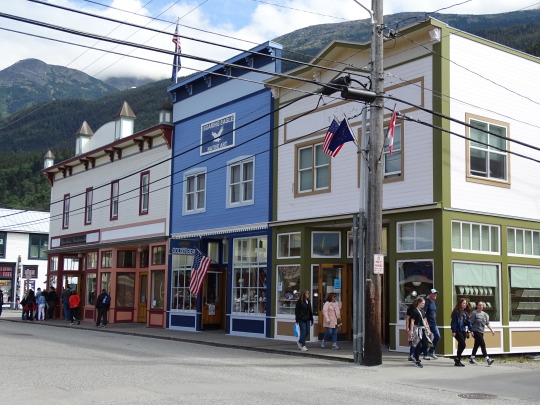

















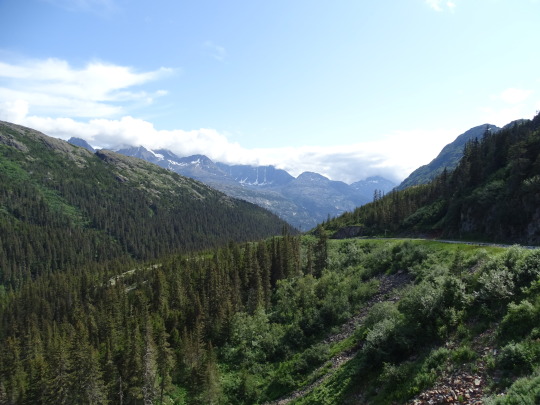







National Alaska Day
The largest state by area to join the U.S. and its last frontier to boot; is it any wonder we have a special day — National Alaska Day, held on October 18 each year — to celebrate this amazing place?
History of National Alaska Day
While the origins and founder of National Alaska Day remain elusive at the moment, we know plenty about how Alaska came to be a part of the U.S. Long before the Russians settled in this Arctic land, it was populated by indigenous people from tribes like Inuit, Yupik, Tlingit, and others. They hunted and lived on whale fat, beaver, and fish. Then, the Russians came and settled in Alaska, leaving only after 68 years of ruling. The history of U.S. rule in Alaska began with the setting up of a transcontinental telegraph line in Sitka, Alaska. The U.S. wanted to expand their territory, and the Russians wanted to leave — the decimated sea otter population meant this land was no longer profitable, and Russia was short on money after the Crimean War, making Alaska hard to defend. William Seward, the state’s secretary at that time, was the main hand behind the purchase. Alaska was purchased at $7.2 million. His championing of this cause was so prominent, the vast majority of Americans who thought this purchase was a mistake took to calling Alaska “Seward’s Folly.”
Then, in the 18th century, two prospectors found gold at the Klondike region, and thus began the gold rush era in Alaska. Numbers indicate upwards of 10,000 fortune seekers that were headed for goldfields at Klondike, and the beaches at Nome in western Alaska, another place where gold was found. The newfound popularity of this region was cemented by its strategic position during the Second World War. When the Japanese invaded the Aleutian Islands, parts of which are U.S. territory and parts belonging to the Russian federal subject of Kamchatka Krai, the American army had already been stationed there, ready to protect their border. After the Civil War, this Aleutian campaign — called the ‘One Thousand Mile War’ — was the first such battle fought on American soil. Alaska remained a territory until the 19th century when it became a U.S. state.
The 19th century also brought dog sledding to the forefront of American consciousness. A deadly outbreak of diphtheria in Nome threatened the lives of every single person living there. Additionally, the place was so isolated, that assisting them was very hard. This situation was worsened by an approaching blizzard, which ruled out air assistance. The only way to deliver an antitoxin was via sled dogs. Enter Leonhard Seppala. His fellow Norwegian Jafet Lindeberg — who struck rich in Nome — asked Leonhard Seppala to come work with him in his Pioneer Mining Company. Records indicate Seppala regretted this decision on account of the work being difficult. That is, until the day he became a sled dog driver, mushing supplies. A team of 20 was assembled, including that of Leonhard Seppala, who was a venerated musher by then. While the lead dog, Balto, became famous, many argue it was actually Seppala and his lead dog, Togo, who were the true saviors that day.
National Alaska Day timeline
1867
The Debate
A debate erupts in the U.S. about the purchase of Alaska from Russia.
October 18, 1867
From Russian Rule to U.S. Governance
The Russian flag at the governor’s house is lowered and replaced with a U.S. flag.
1868
Alaska Becomes a U.S. Territory
Alaska changes hands from Russia to the United States.
1897
The Gold Rush Era Begins
Prospectors Joe Juneau and Richard Harris discover gold in the Klondike region, starting the gold rush in Alaska.
1898
More Gold is Found
Prospectors find gold on the beaches at an Alaskan city called Nome.
1900
Prospectors Pour In
232 ships carrying around 18,000 prospectors arrive in Nome.
1943
Alaska is an Important Frontier
Japan invades the Aleutian Islands and more than 140,000 American military troops are already stationed in Alaska.
January 3, 1959
Alaska Becomes a U.S. State
Alaska is number 49 to join the U.S. as a state.
National Alaska Day FAQs
What is Seward's Day in Alaska?
Falling on the last day of March, this day commemorates the purchase of Alaska by the U.S., negotiated by then-Secretary of State William H. Seward.
Can you see Russia from Alaska?
On a clear day, by climbing a hill on Cape Prince of Wales, you might see mainland Siberia, which is 50 miles away.
Can Alaska be sold?
The United States does appear to have the right to sell Alaska or give it away without consulting its debt holders.
How To Celebrate National Alaska Day
Visit Alaska: If you have the time (and the budget) plan a holiday to see the wonders of this Arctic state. Visit the immense Denali National Park and Preserve, which is home to glaciers, fossil records, and a study in geology. Take a trip to see Glacier Bay, which gives you a glimpse at a color of blue you cannot find anywhere else on Earth. If you are a fan of nature, you are in luck. The Alaskan wildlife is as diverse as it is abundant — you can see humpback whales in the bay, lumbering brown bears in the woods, or bald eagles soaring overhead. Explore travel websites for advice on when to visit and get started planning your trip!
Learn more about Alaska: Not bitten by the travel bug yet? Not a problem. Take a virtual tour of this place. Read up on the history of Alaska, its people, and the reasons that make it a special place unlike any other.
Watch a feature: Settle in for a fun Alaska-themed movie night with the family. Check out movies set in this region, like the rom-com “The Proposal,” the adventure drama “Into The Wild,” or the Disney feature, “Togo.” Want something longer-lasting? The “Gold Rush” reality TV series that aired on Discovery Channel is all about, you guessed it, the gold rush in Alaska. Whatever your fancy, there are many movies or TV shows across genres that are set in this place. So grab some popcorn and enjoy watching Alaska’s beautiful landscape on your screen.
5 Fun Facts About Alaska
Alaska means 'great land': The name 'Alaska' comes from the Aleut word ‘Alyeska,’ which means 'great land'.
Alaska has the highest mountain peaks: Alaska is home to some of the highest mountain peaks in the U.S., like Mount Denali.
The Alaskan flag was designed by a child13-year-old Native American Benny Benson designed the flag of Alaska in 1926.
Lowest population density: Alaska has only one person per square mile, making it the state with the lowest population density in the world.
A sled dog race in Seppala’s honor: The Iditarod Trail Sled Dog Race is held every year from Anchorage to Nome, to honor Leonhard Seppala's mission to save an entire community.
Why We Love National Alaska Day
We get to celebrate Alaskan history: The Gold Rush. The Iditarod. 'Seward’s Folly.' There are so many parts to Alaska's history that we are uncovering. On National Alaska Day, we get a chance to learn about and share in this history and celebrate the fact that this amazing land is a part of the U.S.
Because we love Alaska: The land where the sun shines for 24 hours. The land with the Aurora Borealis. Forests, lakes, glaciers, national parks, hiking trails, islands — Alaska has a little something for everyone. This perfect untouched slice of land is a holiday lover's paradise.
We celebrate America’s history: Just imagine, if Seward had not purchased Alaska from the Russians, Americans could not claim this beautiful land as their 49th state. It’s part of their pride and joy and an attraction to travelers everywhere. Alaskan history is intertwined with American history, and National Alaska Day reminds us of this fact.
Source
#Skagway#Stewart#Kitimat–Stikine#Hyder#Portland Canal#British Columbia#Alaska Panhandle#Coast Mountains#Skagway Historic District#boardwalk#nature#landscpae#cityscape#travel#original photography#vacation#tourist attraction#architecture#summer 2023#USA#Canada#tide flats#National Alaska Day#18 October 1867#anniversary#US history#Klondike Highway#Skagway Centennial Statue by Chuck Buchanan
6 notes
·
View notes
Text
The Reconquista & Moorish Resistance in Spain: Rebellion of the Alpujarras (1499-1501)
1492 was one of the most consequential years for the nationhood of what is now Spain. Not only was it the year Christopher Columbus & his crew reached the Americas in the name of the Spanish monarchs. An event that ignited the subsequent centuries long European exploration & conquest of the North American & South American continents. 1492 was also the year that most historians deemed the official end of the so-called Reconquista.
The Reconquista (reconquest) was also commonly viewed as a centuries long project of entailing conflict between the Christian kingdoms of the Iberian Peninsula (modern Spain & Portugal) aimed at “retaking” the land from the Islamic invaders who hailed from North Africa & the Middle East and ruled over large swaths of land collectively known as Al-Andalus. The grouping of Muslims in Iberia came to collectively be referred to as the Moors. As we’ll elaborate in this post, the Reconquista fitting into a binary Christian European versus foreign Muslim narrative is probably too narrow to accurately the describe the period in question. Nor as we’ll discuss later does the year 1492 automatically signal an end to the Moorish community such as it was within Iberia. As with much of history there is much more nuance to these topics. To get a more accurate picture of history requires accepting that nuance however inconvenient to our preconceived notions did in fact & does in fact exist in virtually every historical event recorded across the spans of time & space.
Let’s then define the rough time period we mean, when we discuss the Reconquista. Historians commonly refer to the Reconquista to be roughly from the year 718/722 AD/CE starting with the Battle of Covadonga lasting until the Fall of Granada in 1492 AD/CE. These are generally the bookends of Reconquista which are more or less accepted by historians today. For further context, let’s remind ourselves of what brought about the Reconquista & then discuss whether that it was a simple case of Christian vs. Muslim.
The Islamic Conquest of the Iberian Peninsula is generally believed to have begun in the year 711 AD/CE when a force of Muslims made up of mostly Berber or Amazigh (native peoples from North Africa) with some Arabs crossed the Straits of Gibraltar from modern Morocco & invaded modern-day Spain. This force was led by one Tariq ibn Ziyad (670 CE-720 CE). Tariq was a Berber from North Africa whose people had only within the last few decades come to embrace Islam & not completely. The early Islamic conquests spread rapidly following the death of the Prophet Muhammad in 632 CE. Muhammad had largely succeeded in uniting the Arabian Peninsula under Islamic rule by his death. From there under the first Islamic empire of sorts, the Rashidun Caliphate (632 CE-631 CE) saw conquests of both some of the Middle East and some of North Africa, namely Egypt from the Eastern Roman Empire (Byzantine Empire) & Iranian Plateau from the Persian Sassanian Empire. Following the First Fitna (civil war), the Rashidun Caliphate was succeeded following the death of Muhammad’s cousin & son-in-law Ali ibn Abi Talib, the 4th and final caliph of the Rashidun (rightly guided). They were succeeded by the Umayyad Caliphate (661 CE-750 CE), the 2nd major Islamic caliphate. The Umayyads were an Arab dynasty & distant relatives of Muhammad taking power after the First Fitna from their power base in Syria. They changed the trajectory of Islamic history in a number of ways. In a leadership level, they became the first hereditary Islamic dynasty, making the caliph less of a religious & political leader & primarily a political leader akin to a king or emperor in practice though nominally had the religious leadership attached to the title but this would decrease in practice overtime. The succession of caliphs were now passed essentially from father to son whereas the Rashidun caliphs were elected by a council called a shura who tried to assess the merits of the candidates proposed. Leadership was intended to be based on those whose character & ability would exemplify Islamic teaching & virtue as they believed the Prophet Muhammad had exhibited in his leadership.
The Umayyads greatly expanded the Islamic conquest to the whole of North Africa by the late 7th century & all the way into parts of Central Asia & the Indus Valley in modern Pakistan & India. They also extended northward into Byzantine held Anatolia (modern Turkey) and the southern Caucasus (Armenia). They further extended their reach into Europe with raids in the Mediterranean including the Iberian Peninsula by the late 7th & early 8th centuries CE. While Islamic teachings held that all Muslims were equal in terms of value regardless of ethnic or geographic background & the Umayyads did indeed rule over a vast multiethnic & multireligious empire, in practice they maintained a preference for Arab Muslims among the bureaucracy & aristocracy to rule over the empire. A hierarchy formed with the Arabs at top, non-Arab Muslims such as Persians, Egyptians, Greeks, Armenians & Berbers who recently converted as generally beneath the Arabs & below them Christians & Jews who did not convert to Islam along with other non-Abrahamic religions at the bottom of the hierarchy. Christians & Jews however were allowed to practice their religion without interference so long as the jiyza poll tax was paid to fund the caliphate’s operations in part.
It was under the Umayyad Governor of Ifriqiya “Africa” (modern Tunisia, Algeria & Libya) Musa ibn Nusayr, an Arab from Syria that Tariq ibn Ziyad was ordered to cross the Straits of Gibraltar & invade Iberia. At the time Iberia was under the control of the Kingdom of the Visigoths. The Visigoths were a Germanic people from Northern & Eastern Europe that moved nomadically into the Roman Empire during the late classical period into the early medieval period. They were among the so-called barbarian hordes that overran the western Roman Empire & had famously sacked Rome itself in 410 AD/CE. This contributed to the eventual downfall of the Western half of the Roman Empire. The Visigoths in time however along with other Germanic peoples like the Ostrogoths, Vandals & Franks began to adopt elements of Roman culture from the areas over which they now ruled. Picking up Latin as an official language & even adopting Christianity. The Visigoths had helped the Romans at one point fend off Attila the Hun and his nomadic empire in the plains of France. The Visigoths had settled in southern France before crossing into Spain where they overtook the Hispano-Roman population. The Hispano-Romans were a mixture of native Iberians, Celts, Carthaginian & Greco-Roman settlers among others in Iberia who more or less coalesced into a common people that spoke Latin & practiced a precursor to Catholic Christianity. Iberia likewise contained the native Basque peoples who maintained their own unique language & culture to this day, largely protected by their residence in the mountainous northern reaches of Iberia & southern France. The Visigoths ruled over them as powerful warrior minority who overtime increasingly assimilated into Hispano-Roman majority but still maintained serious differences. The brand of Christianity practiced by the Visigoths was known as Arianism & differed from the Christianity of Hispano-Romans. They also dealt with somewhat unsettled monarchical rules. Civil war occurred among the Visigoths for kingship which was not necessarily hereditary.
It is said that the rule of a Visigoth King by the name of Roderic who reigned from 710-711 was the impetus for the Muslim invasion. There is much debate about whether Roderic’s reign itself was the cause for the invasion as there is a fabled tale that he seduced or raped the daughter of one of his nobles who turned to the Muslims of the Umayyad Caliphate to act as a mercenary force to avenge & depose Roderic in exchange for conquest of the peninsula. This tale was sometimes accepted as fact but may actually be a tale or contain some elements of truth, the historical record to this day is limited on this. However, what seems to be known is that Roderic’s reign was not fully accepted by other Visigoth nobles within the kingdom & was disputed at best & perhaps ignited civil war or at least created a division that may have led to conspiracy between Visigoth nobles & Umayyads. Whatever the reality, the opposition to Roderic did create an opportune moment for an army of Berber and Arab Muslims (Moors) to land at the Rock of Gibraltar & begin their in-land push to begin conquering the Iberian Peninsula also known as Hispania. Gibraltar in fact takes its name from Tariq ibn Ziyad’s first name. In Arabic the rock which is the symbol of the modern British possession Gibraltar was known as Jabel-al-Tariq (Rock of Tariq), in antiquity it was known as one of the Pillars of Hercules. Roderic raised an army to oppose the Muslims and was defeated it is said due to betrayal of his own forces at Battle of Guadalete. This is turn opened a rapid conquest of virtually all of the peninsula within a decade. The Muslims received more Berber & Arab reinforcements and were more or less accepted by some of the Visigoths & Hispano-Roman population. The Umayyads had added the regions known in Arabic as Al-Andalus or land of the Vandals (Germanic peoples who reigned in Iberia earlier) as their western most province.
For virtually a decade their conquest went unimpeded due to the divisions among the Visigoths & the Hispano-Romans. However, the northern mountains of Hispania did protect some retreating Visigoth & Hispano-Roman Christians as it did their Basque neighbors. Creating a relative safe haven for them in the form of a new kingdom, the Kingdom of Asturias. Additionally, the Muslims had to now consolidate their hold over southern & central Iberia as well as the coasts. Further strains to the Islamic cause came in the form of division between Arab & Berber. The Arabs typically were new to North Africa much less Europe & due to Umayyad preferences were often given leadership positions & the greater spoils of war over the more numerous Berbers who acted as the rank & file soldier typically, leading to lingering resentment. These divisions would persist off and on throughout the history of Al-Andalus, notably in the Great Berber Revolt of 740-43. The Battle of Covadonga fought in either 718 or 722 CE saw the Asturians defeat the Umayyads for the first discernable time & allowed a check on their ambition to completely rule the peninsula. Other setbacks to Muslim conquests came in their invasions of France where in 721 they were defeated in the Siege of Toulouse & in 732 the Franks decisively defeated the Muslims at the Battle of Tours.
In 750 CE, the Umayyads were overthrown by a new Arab dynasty with closer blood ties to the Prophet Muhammad, the Abbasid dynasty. The Abbasid Caliphate (750-1258 & 1261-1517) were descended from the Prophet’s uncle & while they maintained the Umayyad preference for hereditary succession to the caliphate, they reversed the Umayyad preference for an Arab only bureaucracy, largely using Persians to fill government roles & allowing other non-Arabs likewise to fulfill leadership roles. The Abbasids would likewise preside over an age of cultural flowering within the Islamic world, the so-called Islamic Golden Age with the establishment of Baghdad in Iraq as their capital. They’d rule over the largest Islamic empire in history but one not entirely united as they would soon lose Al-Andalus.
The Abbasids would try to kill every remaining Umayyad but one named Abd Al-Rahman Al-Dahkil (the Entrant) managed to escape Syria while witnessing his brother’s execution. Abd Al-Rahman’s father was Arab but his mother was Berber & he sought refuge among his mother’s relatives in North Africa which had become relatively autonomous under the Umayyads due to the rule of another Arab noble dynasty known as the Fihrids. They accepted Abd Al-Rahman’s exile within their borders as they themselves were not eager to accept Abbasid rule & did so nominally. The Fihrids had spearheaded the Arab conquest of North Africa & now ruled as governors of Al-Andalus well into the 8th century but divisions amongst the Yemeni & Syrian Arab factions and Berber factions created an opportune moment for Abd Al-Rahman to make his way into Iberia. There with an army of Syrian Arabs & Berbers he defeated the Fihrid governor of Al-Andalus. In turn he now created an independent Emirate (Principality), the Emirate of Cordoba (756 CE-929CE) which later evolved into the independent and rival Caliphate of Cordoba (929 CE-1031 CE). The Umayyad direct rule over Cordoba likewise saw a cultural flowering which rivalled that of the Abbasids in Baghdad. With geography & other more pressing issues closer at home, the Abbasids de-facto accepted the Umayyad reign over Al-Andalus. This peaked under the reign of Abd Al-Rahman III who reigned as Emir from 912-929 before declaring himself as Caliph of Cordoba and ruling as caliph from 929 to 961. Cordoba became a major center of learning in Western Europe & both as an emirate & caliphate saw much knowledge transfer between Muslim, Christian & Jews. These people could live side by side but by the 10th & 11th centuries CE, the majority population of the Iberian Peninsula was in fact majority Muslim. This populace became collectively known as the Moors to the Chrisitan European world.
What constituted the term Moor? It is derived from the term Mauri originally derived from the Greek term for the Berber tribes of northern Morocco & Algeria, that term was Maurusii or Mauri as it was adopted in Latin later by the Romans after their conquest of North Africa. It also applied to the Latin name for the province of Mauretania. Originally it applied to the Berber peoples of this region, but this preceded the Islamic era by centuries & had no religious connotations. By the time of Al-Andalus, Mauri remained the Latin term for the Berbers but the Muslims were never strictly only Berbers but a combination of Berber & Arabs. The term Moor in English is in turn derived from the Latin daughter Romance languages of Spanish, Italian & French which used the term moro & maure. By the time of Al-Andalus as the Caliphate of Cordoba, Moor was applied to all Muslims within the Iberian Peninsula. This applied equally to Berbers, Arabs & European converts to Islam, the Hispano-Romans & Visigoths also to some degree converted to Islam, as did slaves imported from Eastern Europe via the Arab slave trade. These latter two groups (Hispano-Romans & the Slavic slaves) helped constitute the majority of Iberia’s previously Christian population & it was through this conversion that Islam became the predominant religion of Iberia during much of the Middle Ages. They were known as muwallad.
Moors never truly constituted a specific ethnicity in Spain & Portugal. It was perhaps better described as a cultural or religious designation rather than an ethnic or racial one. Moors came from various ethnic backgrounds spanning 3 continents (Europe, West Asia & North Africa) and could range in skin color from dark to light & fair skinned as it was not a racial designation. Furthermore, the racial divides between Berber & Arabs during the earlier Al-Andalus period began to dissipate gradually over the centuries due to intermarriage between the two communities & this also included muwallad (Hispano-Roman) marriage with Berber & Arab communities as well. In time leading to a community that became better known as Andalusian (taken from Al-Andalus) or to the Christians as Moors.
As the Islamic power changed overtime from emirate to caliphate likewise new Christian kingdoms arose from the north of Iberia. Asturias gave way to the Kingdom of Leon & the Basques formed the Kingdom of Pamplona. In time the kingdoms of Castile & Aragon formed & Pamplona turned into the kingdom of Navarre. As the Reconquista progressed the political interplay between Christian & Muslim powers became complex & despite the common narrative of a strict Christian vs. Muslim conflict much like the Crusades of the Middle East from the late 11th century onward, a more nuanced reality existed. The caliphs of Cordoba were in fact mostly European being only patrilineal descendants of the Arab Umayyads. Their mothers were made up of generations of either European slaves taken in raids or in some cases the Basque & Hispano-Roman royalty of the northern kingdoms who made treaties with the Umayyads & sometimes sent their daughters or sisters to become wives of the emirs & caliphs so as to ensure peace between their respective kingdom. Abd Al-Rahman III, Caliph of Cordoba was the grandson of a princess from Pamplona & great-grandson of the Basque king of Pamplona. He was said to have had fair skin & light eyes & hair/beard which he dyed black to make it appear more “Arab” despite that three-quarters of his grandparents were completely European, the remaining quarter was partially Arab intermixed with European captives in the emir’s harem. Subsequently his cousins constituted the fellow monarchs of northern Iberia he had to contend with both through war & diplomacy.
Throughout the Reconquista era, interaction between Christian & Muslim occurred at all levels in Iberia. Trade, commerce, art, education & cultural exchange was not uncommon in addition to the familial ties of politicians & the ever-shifting alliances. Christian powers were in competition with each other & Al-Andalus, matters complicated further following the collapse of the Caliphate of Cordoba which saw the break apart into numerous Muslim petty kingdoms called taifas. Some ruled by Arab, Berber or muwallad dynasties. Some paired with Christian powers against rival Muslim powers & likewise Christian powers teamed with Muslim powers against fellow Christian powers but the fractured nature of the taifas gave opportunity for Christian kingdoms like Castile & Aragon to gradually take more territory. This was encouraged by the papacy in Rome and other players in Western Europe which sometimes saw French, English and other European mercenaries serve in the Iberian Christian armies against the Muslims. So, it’s not inaccurate to say the Reconquista contained elements of a Christian vs. Muslim narrative & indeed it was a goal of many if not all Christian rulers in Iberia to drive the Muslims ultimately out of Iberia & unite the lands under their own rule, but their ambitions also extended to leadership over their fellow Christians too. The question was would achieve this.
Before this could happen, intervention from Morocco took place with a Berber led religious movement/dynasty known as the Almoravids intervened in Iberia & defeated a Castilian & Aragonese combined force at the Battle of Sagrajas in 1086. They had been invited by the taifa rulers of Al-Andalus who realizing their own power slipping due to their infighting & subsequent losses to the Christian north needed a united front against complete collapse. The Almoravids indeed halted the Reconquista but in the 12th century as home in Morocco they were supplanted by yet another Berber religious movement & dynasty, the Almohads. The Almohads not only took over Morocco but much of North Africa & eventually Al-Andalus. Likewise, they had to compete with Christian powers and the remaining taifas of Iberia more or less determined to maintain some autonomy.
However, the tide seemed to forever turn in the Christian favor following the 1212 CE Battle of Las Navas de Tolosa in which a Christian coalition of Castile, Aragon, Navarre and a host of Crusader military orders & mercenaries from throughout Western Europe defeated the Almohads decisively. This subsequently saw the Almohads eventually collapse in Iberia while they likewise power to various dynasties in North Africa spanning from Morocco to Libya. The third taifa period in Iberia came after the Almohad collapse. This likewise saw the taifas being subsumed by the Christian kingdoms. The one relatively strong Muslim power to remain in Iberia was a relatively new one which became the Emirate of Granada (1230 CE-1492 CE).
Granada had the Sierra Nevada mountains to offer it a modicum of defense from the Christian north & its ruling dynasty, the Nasrids were of Arab stock. The Nasrids two lasting contributions would be in architecture & historical placement. Their architecture was best exemplified in the form of the world famous Alhambra palace complex. Which served as a fort & series of palaces built on a hill overlooking Granada that saw expansion over the coming centuries. The Nasrids unfortunately for the Muslims of Iberia were known in history as the rulers of the last independent Muslim realm in Western Europe. As time went on they became vassals of the Kingdom of Castile, the most powerful & leading Christian realm in Iberia. They alternated between war & peace with Castile, inflicting defeat & suffering defeat to the Castilians a gradual loss of territory to the Christians became irreversible & more and more the Muslims of Iberia of Berber, Arab & muwallad background rallied around their religious & cultural identity, becoming more culturally & geographically Andalusian as ethnic identifiers continued to wane in importance. Granada’s ever shrinking borders became the last safe haven for the free practice of Islam in Iberia, something that had lasted for nearly 800 years.
1491-1492 would see the Emirate of Granada come to end, along with it a successful completion of Reconquista and the end of Muslim rule in Iberia for all time up to the present. The Catholic Monarchs, Isabella I of Castile & her husband Ferdinand II of Aragon created a personal union between the two most powerful kingdoms in all Iberia. Their marriage also saw a renewed joint focus on ending Granada with the idea of removing the last Muslim power in the peninsula. Starting in 1482 Castile & Aragon fought a decade long war with Granada but it was the siege of Granada itself in 1491 that caused Muhammad XII, the Nasrid emir of Granada to surrender the city, the whole of the emirate & the Alhambra palace built by his ancestors to Isabella & Ferdinand. Christian success came when the besieging forces bombarded the city with early gunpowder artillery & cutoff the water supply & demoralized the Muslim defenders. Additionally, there was rampant bribery going on between both sides which added an air of confusion & distrust between peoples within & outside of Granada. Finally, the terms offered by the Catholic Monarchs to Muhammad XII caused him to capitulate as they were deemed generous to the Muslims of Granada & this was preferable to complete death & destruction.
The Treaty of Granada signed in November 1491 gave a truce that stated on January 2nd,1492 the city would be handed over to the Christians effectively ending the Reconquista. The treaty had many articles but largely can be summed as saying the Muslims of Granada in exchange for their submission to Isabella & Ferdinand would be able to essentially keep their property & maintain their free practice of religion & custom with little or no interference.
While this officially ended the Reconquista, it also helped give birth to the modern nation of Spain as Spanish nationhood became a more discussed notion following the fall of Granada. The Alhambra was eventually converted into a Christian palace, particularly under Isabella & Ferdinand’s grandson’s (Charles V, Holy Roman Emperor) reign.
Initially, these generous terms afforded to the Muslims of Granada from their new sovereigns was adhered to but for both Jews & Muslims in Spain, the subsequent Spanish Inquisition by the Catholic Church would lead to massive disruptions. However, their remained a difference of opinion between the church and the monarchs. Church officials wanted the state to apply pressure to the Muslims & Jews of the kingdom with an eye towards conversion en masse. Meanwhile, the king & queen sought to uphold the terms & let the Muslims passively convert to Christianity if possible. In 1499, during their visit to Granada the population (many Muslim) actually cheered the crown for nearly a decade of respectfully adhering to the provisions of the treaty in 1491.
This rapidly changed that same year when the Archbishop of Toledo moved to Granada & begin asking for the imprisonment of Muslims including the nobles. Once in prison they faced torture until conversion. Spurred on by this the Archbishop begin to increase the pressure by having a loophole in the trearty allow for the questioning of Christians who had become Muslim converts & done so in front of Muslim clerics. These converts were summoned to prison for questioning & often women were targeted which angered their Muslim male relatives. This reached a breaking point when one convert woman openly decried she was being forced to convert to Christianity, the officials escorting her to prison were surrounded by a Muslim crowd, one was killed while the other escaped & this in turn triggered an open revolt.
The archbishop demanded the Muslims hand over the killers of his agent which failed. Instead, he called up soldiers to help provide a show of force if necessary to put down the revolt. After negotiation the killers were turned over the rebellion died down due Muslims handing over their weapons. Nonetheless the archbishop was recalled to Seville by Ferdinand who was angered. The archbishop nevertheless convinced him that Muslims broke the treaty through their open revolt. Furthermore, he managed to get the Catholic Monarchs to pardon all rebels in exchange for their conversion to Christianity. This conversion was nominal for the whole Muslim populace of Granada.
While Granada’s Muslims calmed their own rebellion down through negotiation, the rebel attitude spilled over to the countryside. Particularly into the Alpujarras mountain range south of Granada. There the Andalusian Muslims were living fairly free lives devoid of much interference & enforcement of the treaty. Fearing the forced conversions that befell Granada, they declared the revolt in the name of preserving their religion & culture. Due to the mountainous terrain & well led tacticians, they were able muster up a guerrilla warfare campaign against Christian rule. However, the Christians were able to send roughly 80,000 soldiers into the region to put down the rebellion eventually with Ferdinand overseeing the war efforts. The Muslim guerillas lacked an organized structure of command & overall strategy & this in turn allowed the Christian forces to defeat the rebels piecemeal. Rebel lives could be spared on the condition of conversion to Christianity. Furthermore, the Christian forces now took to preserving little to no quarter to the enemy. In the town of Laujar de Andarax 3,000 Muslims were killed included hundreds of women & children blown up in a mosque in which they sought refuge due to ignited gunpowder supplied to besiege the town. By early 1501, Ferdinand declared the rebellion over. The Muslims continued to rebel & they were met with both defeat & victory but realizing they could not have a great chance at winning the war without a defined command & strategy, they sued for peace. Ferdinand likewise felt the peace was needed since his army couldn’t sustain the logistical challenges of a long-drawn-out guerilla war in the mountains.
The terms of Ferdinand’s accepting the Muslim’s surrender was no longer the generous terms of 1491 a decade before. The rebels must convert through baptism, reject baptism & face death or enslavement or finally choose exile outside of Iberia. The cost of exile was to be self-funded too & for many, it was far too expensive & extortionate for the average Andalusian Muslim. This left few any decision but to remain & nominally convert. All Muslims in Granada were in name Christian if in practice they continued to defy the laws they now were forced to follow. Many continued to practice Islamic customs in secret, but they were able to maintain their Islamic dress & some would still speak Arabic & maintain other customs. The enforcement by the Christian authorities was stricter than before the rebellion but it was not always feasible, especially in the mountainous Alpujarras. They publicly professed to be Christians but were determined in many cases to remain Muslim despite the threat of death which hung over them. These lingering tensions & suspicions by the subsequent Spanish monarchs & the church led to increased scrutiny & enforcement in the form of dress codes, inquisitions into the sincerity of their conversion & harsh punishment for those found to violate the new royal proclamations. By now, the Muslims in Iberia were referred to as Moriscos in Spanish, which translates as “little Moors” & applied to these Spanish Muslims who now professed to be Christian through conversion but still secretly practiced Islam & maintained Islamic traditions in private. For the Moriscos, the tension between state & mosque was eventually going to be too much to withstand. Events would boil over into a second and even larger rebellion later in the 16th century one which would determine the fate of Iberian Moors for centuries to come...


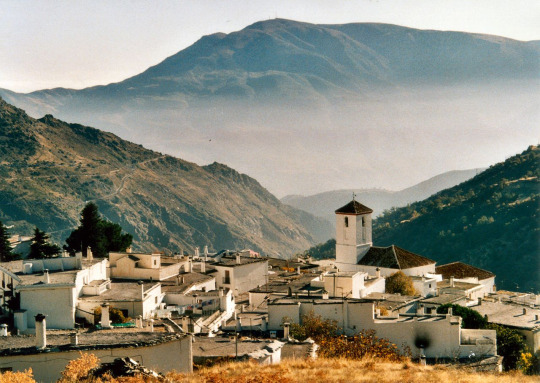
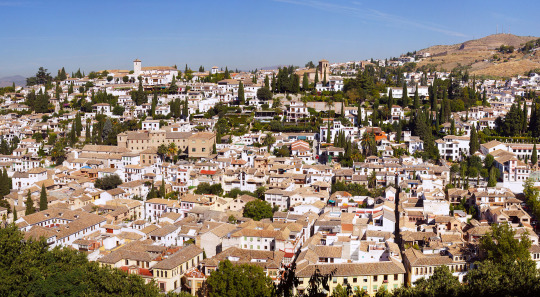
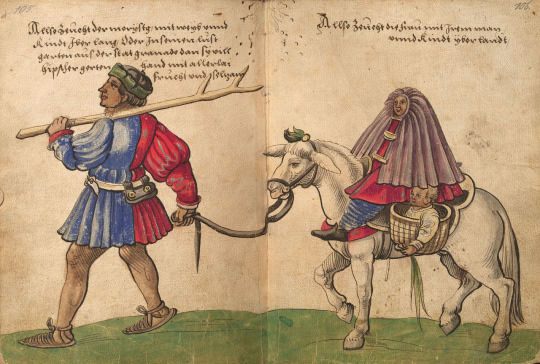
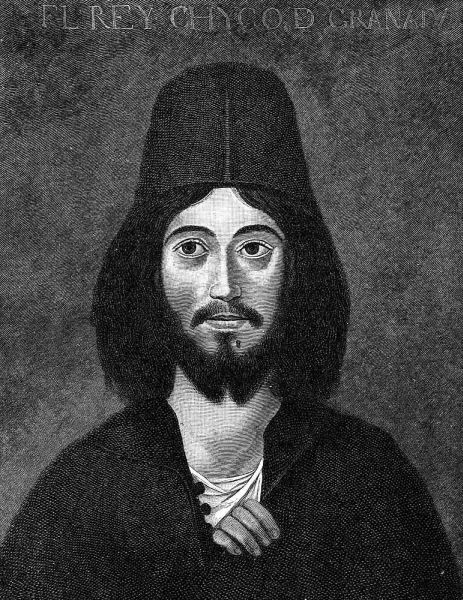
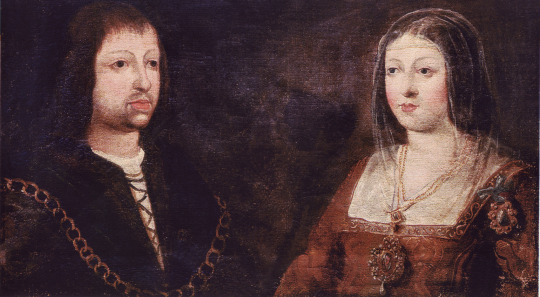
#Moors#morisco#spain#islamic history#islam#spanish inquisition#castile#aragon#portugal#navarre#granada#Emirate of Granada#cordoba#umayyad#Al andalus#military history#alpujarras#Guerilla Warfare#Middle Ages#reconquista#caliphate of cordoba#abbasid#catholic monarchs#ferdinand ii#isabella i of castile#1492#christopher columbus#morocco
6 notes
·
View notes
Text
I love the old stuff...the new stuff...
I honestly want the main characters to leave me alone. Sto is about your star trek captain. Not Beverly Crusher, Admiral Janeway, ect . i don't mind them appearing from time to time, but dear god am I ready for a mission without a celebrity.
On a similar note, chill with the galaxy ending threats. From 2409 to 2413 we have-the Iconian War, the Undine, the Hurq, and the Terran arc all ending with almost destroying one or more Alliance worlds. The current one appears to be a mulitversal collapse/threat with new 'super' borg
Well Hazel if you wanna complain so much what would you do next.
Clean up. Every Major power has been rocked in the last few years in-game. Lean into that!
So the first drop of episodes would be New Romulus. The new Romulan/Reman homeworld was over run by the Iconians like two years back. The Republic Navy started out using 2 century old T'liss bc they had nothing else and they been bleeding ships ever since. Your ship is sent to deal with pirates who have been targeting supply lines meant to help rebuild the home world and fleet. You fight alongside the Lleiset and several new RRN ships (which then can be sold to players) and remastered old ones. The arc (3-5 episodes) ends with you laying siege to the pirates starbase.
Arc 2 is the Dominion. They lost most of their fleet in the DS9 arc, and your sent to help them re-establish their borders. Features the USS Defiant (New Defiant A?) And Cardassians as well. The story focuses on the Dominion being forced to recon with their past actions now that they're vulnerable. Final battle sees the Dominion defend a former member from the 'true way' terrorist group alongside a Cardassian fleet. Introduced new dominion and cardassian ships Not bc they expect the former planet to rejoin, but bc they promised the planet protection, but bc that is a promise they can keep, and they refuse to break anymore.
Arc 3. Delta Quadrant. The Borg Cooperative wishes to join the Alliance. Help them search for a homeworld alongside the USS Voyager (B?). New playable Borg ship, but also new Federation Ships and remastered/T6 Dyson Destroyers.
Arc 4. The Klingon Empire. The empire may be unified again...but its not healed. Join a humanitarian effort to reestablish supply lines and trade routes within the empire alongsode the Bortasqu. Deals with the fallout of the Klingon civil war. Introduces T6 version of the t5 bird of prey.
Arc 5. The Federation. The players flagship returns to the Vega colony to retake it from the borg alongside the USS Enterprise.
There are rumors that STO is going to move publishers again, this time to one that focuses on maintaining old games… it feels like SUCH a long shot, but I kinda hope it happens and that the new publisher takes it back to its roots i.e. focusing more on original stuff rather than celebrity cameos every ten seconds
I would start playing again if it ended up being more like OG STO and less. Well. Whatever the hell is going on over there right now
23 notes
·
View notes
Text
𝗛𝗲𝗮𝗱𝗰𝗮𝗻𝗼𝗻𝘀 & 𝗟𝗼𝗿𝗲 | Guizhong
➤ Assumed to be the last living Phoenix in all of Teyvat. ➤ Was not born as a Goddess, but rather as an Illuminated Beast. ➤ During her earlier years, Guizhong was a reckless beast that held little to no regard for life — she tore up anything and everything in her path out of frustration and resentment, all in due of a past she could not come to accept. ➤ Her kin were slaughtered — taken by Khaenri'ah to utilize their life essence for the sake of improving their alchemy and war machines. Guizhong was very young at the time and could not understand the concept as to why her kind were not able to rise back from their ashes . . . why it had seemed as though they gave up — that they did not want to live anymore. She held onto this ideology that a Phoenix who did not want to resurrect had no reason to live anymore. ➤ It wasn’t until she grew interest in godlihood, that she began to cultivate. Years — centuries, had passed during this time . . . Guizhong had learned to humble herself. Patience was a must during cultivation and had been adopted into her personality over this span of time — grew into her being. She’d also come to realize how her old mindset was warped and skewed by a blinded frustration — or own naivety at being so young and unable to understand what truly happened. ➤ Since then, she had initially forgone her Illuminated Beast form and kept to her human-like appearance — a fresh start without being weighed down by the ties of her past and the reputation she had built once before. ➤ Using her calmer, caring disposition and the intelligence she had nurtured, Guizhong quickly became beloved by many humans in Liyue. She’d since wanted to protect humans — a desire to use her power to protect others now, instead of fighting in meaningless battles. Knowing how fragile people were . . . before the concept of Visions was even a thing — she had become a firm believer in how the strong should protect the weak and cohab together . . . to utilize each others strengths and brilliance to form a civilization that could flourish by relying on one another. ➤ Meeting Rex Lapis and the other Gods and Goddesses she’d managed to befriend . . . other Illuminated Beasts — it had then clicked to Guizhong that she could still utilize her Phoenix form . . . that there was a weakness to be found in strength, and how truly strong a person could be in their times of weakness. Her past hadn’t mattered at this point — she could protect those she cherished no matter what form she took on, as long as she utilized her abilities carefully. ➤ Guizhong was not born with the world in her hands . . . she had to work for it — to utilize what she had learned to better herself and become a figure for others to look up to. However, this goes without saying that she was also loathed by many . . . as to others who did not know of her past, nor only looked at her from the outside — Guizhong seemed like a princess out of tales humans would tell their kids. She was kind, diligent, made friends so easily, extremely smart, and had the power to fight back — she seemed nearly perfect in every way. ➤ As such, she was a prime target for assassination. There were those who wanted to be like her — to take her place despite how unrealistic such an ideal was. Then, where was the fact of her relationship with Rex Lapis . . . others had wanted to take her life in order to wound the Lord of Dragons. ➤ This transitioned into the Archon War, where Guizhong was heavily outnumbered for the majority of the fight. She was a prime candidate to get rid of and as such, had sustained heavy wounds throughout the course of the battle. However, it was Guizhong’s ultimate choice to sacrifice herself for that war to end. ➤ As a Phoenix, their secret in rebirth is using a large amount of Adeptal Energy stored up to channel into resurrecting — a skill that only her kind had been able to utilize. Guizhong was always careful when using her abilities by ensuring she always had enough energy to use for this skill when push came to shove ➤ During the war, however . . . Guizhong used up every single ounce of her energy for one final attack — a large burst of energy that had helped in turning the tides of this war in favor of her and her comrades . . . but it was also with this, that she began to wither away slowly into dust. ➤ Yet as if to make matters worse . . . Guizhong knew she was going to die — there was no saving her at this point. So when she saw a lethal attack aimed onto Rex Lapis, she’d used what little strength she had left to use her body as a shield. It was with this final blow, that she perished . . . ➤ Guizhong held no regrets with her death . . . because finally, she was able to fight until the bitter end . . . not for herself or out of frustration over her kins death . . . but to finally be able to protect others. She would rather die happily, knowing a bright future is to come with the people she loves and trusts, rather then to revive in a world where everyone she loved has died . . . into a future where there was no hope or peace. ➤ When it comes to her resurrection into the current time and events of the story, Guizhong had made one last ditch effort into utilizing her cultivation — her powers as a Goddess, to revive. It had ultimately taken so long to recover, because the pure raw energy that came from cultivating was far different than that of a simple Adeptus. It had taken many years to convert such energy into something viable for her revival. ➤ As for this reason, Guizhong revived into the current timeline is no longer a Goddess — a simple status of an Adeptus now. She does not care though, as nothing would make her happier than to reunite with her companions once more . . . ➤ However, Guizhong also had not fully recovered from her injuries of the war. She is brought back in an extremely weakened state with little to no Adeptal Energy. It will take a great deal of time until she is fit enough to utilize her abilities to their fullest once more.
#Star Touched Wishes | Headcanon#Memories in The Dust | Guizhong#| LONG POST |#| tw | character death#|ooc| took matters into my own hands and gave her a more detailed backstory#|ooc| Guizhong deserves so much more love && appreciation with her contributions and how she was like the glue that held them together#|ooc| nobody talks about her && it makes me sad
14 notes
·
View notes
Note
Halo! Here's a reddit link to information and research papers about onmyodo consolidated by other people and a link to an overview. Tried to summarize below bits and pieces that may be relevant to jjk (and which I tried to understand to the best of my abilities :P )
I think this will be the last time I write such a long-ass ask again, my apologies
About cursed spirits and mono
Court onmyojis in Heian used divination to find out the cause of things like curses, strange events (kaii), natural disasters, illness, why your dog is barking at a seemingly empty spot (answer: Megumi's divine dog is barking back) and so on. Strange events were referred to as mokke (物怪) or mono no satoshi (もノノサトシ) and believed to be omens of calamity that were caused by mono or "things" which could be anything like the curses of gods or something from the Imperial mausoleums. Furthermore, during the rule of Emperor Kanmu from end of Nara to early Heian, the Ritsuryo system of government began to crumble as imperial rule changed hands and political victims were feared as onryō (怨霊) that caused disease or death to the Emperor's nearest relatives (but not the Emperor himself). The fear of strange phenomena spread through the aristocrats and became commonplace. Onymojis were believed to be able to deal with the curse of mono as well (otherwise it's off to the chopping board for their jobs (and lives) they go, chop chop). And so the Imperial Court funded them to perform quelling rituals and ceremonies to appease gods, clear away damages by insects, pray for harvests and prevent the spread of epidemics (which ironically was exacerbated by the court's overspending and large-scale deforestation but that's another story). For individual cases like the spirits of living persons (ikiryō or ikisudama), or spirits of dead people (akuryō, ryō, onryō, shiryō or bōkon), onmyojis might determine that spiritual energy or evil spirits (mono no ke) was the cause but mikkyō genja (験者) or ritualists were the ones to subdue it by incantations. JJK cursed spirits resemble mono no ke in that they cannot be seen and may harm humans. Whereas jujutsu sorcerers are more like genja ritualists (complete with flashy kamehameha bombs) (and besides being cursed).
Lifespan rituals
The most popular theory for Sukuna's fixation with Megumi has already been covered by this blog owner with additional info on the Ten Divine Treasures. Another theory is that Sukuna could have been aiming for a higher level of enlightenment. Besides the Shinto-Buddhism angle, Onmyodo also has its own set of rituals concerning life and death. Onmyodo is basically a system of divination and techniques that focuses on worldly benefits and has no vision of the world after death. The rituals were instead based on the Chinese beliefs in honmyō (本命), Zokushō (属星) or the realm of the dead (冥界) and by the end of Heian, there were more than forty Onmyodo rituals to pray for the individual health and longevity of aristocrats (commoners: eat the rich 👎). For the terms honmyō and Zokushō, the closest meaning I can give without being too horribly misleading would be the life/destiny that you are born with according to your birth year, zodiac, constellation and so on. The most popular ritual was Taizan Fukun sai (泰山府君祭), which originated around the beginning of the tenth century and was closely associated with Abe no Seimei (yes that guy you keep seeing in anime). Taizan Fukun (泰山府君) is the lord of the eastern peak of Mt. Tai in China, a deity that summons the spirits of the dead and administers the lengthening and shortening of human lifespans. Twelve deities of the realm of the dead including Taizan Fukun were involved in this ritual. It was implemented on every honmyō day, but also as needed for illness, childbirth, natural disasters, and strange events. Media adaptations often depict Abe no Seimei (or other onmyojis) using the ritual for resurrection or reincarnation 😅 e.g. Tokyo Ravens, Shaman King, Onmyoji (2001). I don't think Gege will go for the same cliché trope for Sukuna but it's still interesting to know.
Seimei and Dōman (Gojo and Getou)
Anyone who knows about the folklores of Abe no Seimei 安倍 晴明 would be familiar with his eternal rival, Dōman 道満. Like Gojo who's the strongest jujutsu sorcerer, Seimei was the leading onmyoji specialist of his time. His position as the Kurōdo-dokoro onmyōji (highest-ranking onmyoji), legendary reputation and long lifespan lent to the notion that he had mystical powers due to being born from a human father and a kitsune mother. During Heian, Onmyodo referred to the organization of onmyojis under the control of high-ranking people of the same profession (kinda like the JJK elders) rather than the system of beliefs known today. Onmyōji with official status like Abe no Seimei would be kanjin onmyōji (官人陰陽師) or official onmyōji. Non-official onmyojis would include hōshi onmyōji (法師陰陽師) or priest onmyōji, who had the appearance of Buddhist priests (like how Getou was dressed as a cult leader), and presumably the control of the Onmyōdō did not extend to them. Official onmyōji, under the strict supervision of their superiors, would not have been permitted to have any connection with criminal acts such as curses. Instead, the Heian nobility turned to hoshi-onmyojis like Dōman to lay curses on their political rivals. There were many incidents involving curses within aristocratic society in Seimei’s time, and in a majority of cases the curses were placed by hōshi-onmyōji. Dōman himself had been spotted visiting a noblewoman, Takashina no Mitsuko, who employed hōshi-onmyōji to put a curse on several prominent political figures. Getou: "Let's curse each other... to our hearts' content!"
War onmyojis (and questioning of Gege's probable naming sense)
The Sengoku era treated court onmyojis poorly (ceremonies were expensive to fund). Warrior onmyodo being more practical (divining auspicious days for battle/forming alliances and exorcising evil spirits) became prominent instead. Academies that taught Confucian studies with divination and medicine as part of the curriculum flourished and the most famous was Ashikaga Gakkō (足利学校) (not as modern as Tokyo Jujutsu High though). Like Nanami and co. who became professional sorcerers, many of its students went to the battlefield as diviners and doctors. When peace returned during Tokugawa Ieyasu's rule, a few practitioners thrived by attaching themselves to powerful men. One would be Tenkai (天海) and another Kanshitsu Genkitsu, head of the Ashikaga Gakko. Being Ieyasu's bff, a temple Fushimi Enkoji (伏見円光寺) modeled after Ashikaga was built and Kanshitsu appointed as its head. Ieyasu also sponsored Kanshitsu's Fushimiban (伏見版), a publication project printed with wooden blocks. I'm definitely reaching here for Tengen and Fushiguro but I do wonder if Gege ever chanced upon those names.
🦆A Tail of Many Kamos: 鴨川, 下鴨, 鴨, 加茂, 賀茂 🦆
鴨川 - the Kamo river northeast of the Heian capital (modern Kyoto)
下鴨 - the Shimogamo Shrine (下鴨神社), a Shinto shrine dedicated to the Kamo family of kami
鴨 - the clan associated with the Kamo shrines and the famous poet-priest Kamo no Chōmei (鴨 長明) who witnessed the end of Heian. Also Bucephala albeola.
加茂 - Kamo no matsuri (加茂祭) or Aoi no matsuri (葵祭), an annual festival of Shimogamo Shrine and Kamigamo Shrine and one of the three major festivals in Kyoto, also one of the three big jujutsu clans (加茂家) in JJK. It's funny that Gege would choose a name with the same pronunciation as a real-life historic clan, which brings to the next point.
賀茂 - the formal name of the Shimogamo Shrine (賀茂御祖神社), also a once-prominent Heian Onmyoji family that died out during the Sengoku era. Thereafter, the Tsuchimikado (former Abe clan) took over their hereditary duties of keeping the calendar. Abe no Seimei's teacher was the astrology scholar (tenmon hakase 天文博士) Kamo no Yasunori (賀茂保憲). Could Kenjaku be based on Abe no Seimei as well?
The Musical Exorcist
The rock-n-roll grandpa, Gakuganji, might be based on the lesser known lute-priests called biwa-hoshi (琵琶法師) or zatō (座頭). Their musical style is referred to as heikyoku (平曲), which literally means "heike music". Accompanied by their mōsō-biwa (盲僧琵琶), the often-blind lay priests would chant Buddhist mantras, placate earth deities, perform spirit pacification chinkon (鎮魂) of vengeful spirits including onryō, communicate with the dead (Principal Yaga 😢), purify defilements haraikikyomeru (祓い清め) and border rites kyōkai girei (境界儀礼) that expel malign forces. The thesis "From Heike to Nomori no kagami" suggests that the musical practices and theories of Heike correlate with Yin-Yang principles. Which I will not further expound bcos I haz zero music theory knowledge and also this ask is far too long 😛 Hopefully Gakuganji will not remain blind to the less-than-holy intentions of the jujutsu higher-ups as the story continues.
Hello, lore anon! Thank you for compiling another stellar read!
Aaw, you'll be missed, but it's fine. Just do things and drop by if you feel like it.
Yes, onmyodo has a large influence on Japanese pop culture. Numerous manga takes their inspiration from onmyodo, jjk only one of them. Onmyouji had a very large political influence in the court. They were also a legit government position, literally civil servants back in the day.
The legend of Abe no Seimei and his rival Ashiya Douman is also famous. Abe no Seimei was said to be born from a kitsune (fox spirit) mother and human father, so he is often thought to not be fully human, hence his supernatural ability. I wouldn't be surprised if one of these characters is inspired by either Seimei or Douman; Sukuna, Kenjaku, or Tengen.
Kamo, yes, it seems that Gege actually takes the name of the clan. The fanbook said that Kamo clan arised to influence during the heyday of Heian period, the Golden age of Jujutsu. While it's lesser known, Kamo family is quite a legend too alongside Abe no Seimei in onmyoudou. As you said, Kamo no Tadayuki and his son Kamo no Yasunori has been known to teach Abe no Seimei.
91 notes
·
View notes
Photo



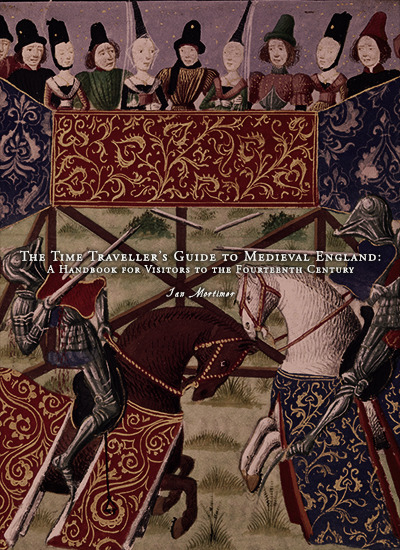

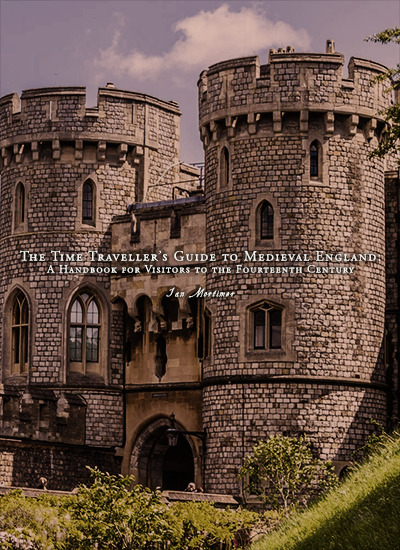
Favorite History Books || The Time Traveller’s Guide to Medieval England: A Handbook for Visitors to the Fourteenth Century by Ian Mortimer ★★★★☆
What does the word “medieval” conjure up in your mind? Knights and castles? Monks and abbeys? Huge tracts of forest in which outlaws live in defiance of the law? Such images may be popular but they say little about what life was like for the majority. Imagine you could travel in time; what would you find if you went back to the fourteenth century? Imagine yourself in a dusty London street on a summer morning. A servant opens an upstairs shutter and starts beating a blanket. A dog guarding a traveler’s pack horses starts barking. Nearby traders call out from their market stalls while two women stand chatting, one shielding her eyes from the sun, the other with a basket in her arms. The wooden beams of houses project out over the street. Painted signs above the doors show what is on sale in the shops beneath. Suddenly a thief grabs a merchant’s purse near the traders’ stalls, and the merchant runs after him, shouting. Everyone turns to watch. And you, in the middle of all this, where are you going to stay tonight? What are you wearing? What are you going to eat?
As soon as you start to think of the past happening (as opposed to it having happened), a new way of conceiving history becomes possible. The very idea of traveling to the Middle Ages allows us to consider the past in greater breadth—to discover more about the problems which the English have had to face, the delights they found in life, and what they themselves were like. As with a historical biography, a travel book about a past age allows us to see its inhabitants in a sympathetic way: not as a series of graphs showing fluctuations in grain yields or household income but as an investigation into the sensations of being alive in a different time. You can start to gain an inkling as to why people did this or that, and even why they believed things which we find simply incredible. You can gain this insight because you know that these people are human, like you, and that some of these reactions are simply natural. The idea of traveling to the Middle Ages allows you to understand these people not only in terms of evidence but also in terms of their humanity, their hopes and fears, the drama of their lives. Although writers have traditionally been forced to resort to historical fiction to do this, there is no reason why a nonfiction writer should not present his material in just as direct and as sympathetic a manner. It does not make the facts themselves less true to put them in the present tense rather than the past.
... Medieval England is potentially a vast destination for the historical traveler. The four centuries between the Norman invasion and the advent of printing see huge changes in society. The “Middle Ages” are exactly that—a series of ages—and a Norman knight would find himself as out of place preparing for a late-fourteenth-century battle as an eighteenth-century prime minister would if he found himself electioneering today. For this reason, this guidebook concentrates on just one century, the fourteenth. This period comes closest to the popular conception of what is “medieval,” with its chivalry, jousts, etiquette, art, and architecture. It might even be considered the epitome of the Middle Ages, containing civil wars, battles against the neighboring kingdoms of Scotland and France, sieges, outlaws, monasticism, cathedral building, the preaching of friars, the flagellants, famine, the last of the Crusades, the Peasants’ Revolt, and (above all else) the Black Death.
Having emphasized that the focus of this book is fourteenth-century England, a few caveats must be added. It is not possible to recover every detail of the period on the basis of fourteenth-century English evidence alone; sometimes the contemporary record is frustratingly incomplete. Also we cannot always be sure that the manner of doing something in 1320 necessarily held true in 1390. In some cases we can be sure that things changed dramatically: the entire nature of English warfare altered over this period, and so did the landscape of disease, with the catastrophic advent of the plague in 1348. Thus, where necessary, details from the fifteenth century have been used to inform descriptions of the later part of the fourteenth century, and the thirteenth century has been used to inform judgments about the early part. This blurring of time boundaries is only necessary where very difficult questions are raised. For example, we have relatively few sources underpinning our understanding of courtesy and manners in the fourteenth century whereas we have several excellent sources for the early fifteenth. Since it is unlikely that good manners developed overnight, the later evidence has been used as the fullest and most accurate available.
#historyedit#litedit#medieval#english history#european history#history#history books#nanshe's graphics
37 notes
·
View notes
Text
The Darkling in Rule of Wolves [SPOILERS]
I have seen very different opinions about The Darkling’s arc in Rule of Wolves.
Many haters think that his sacrifice did not make sense for his character, especially since he did not repent.
Many of those who stan a romanticized version of the character have complained that his complexity was taken away and that he was vilified excessively.
So here I am, feeling the need to explain why I believe that he is still a very complex character and that Leigh has written him in a way that further what she’s already established for the character in a beautiful way that we rarely see in the genre.
In fact, I think that Leigh has no anti-Darkling agenda. She wrote him as a villain that is a series of contradictions and who has a great arc of existential crisis; an arc which leads to him fixing some of the damage he’s caused.
Most villains in YA either keep to their villainous goal, or are centuries-old men who, after being set in his ways for so long, conveniently have a rushed redemption arc and a change of beliefs that doesn’t make sense and feels like they have had a change of personality. Leigh managed to tiptoe between the two.
Some Themes That Make It Into The Darkling’s arc in Rule of Wolves:
POWER & SAVING THE GRISHA:
As always, we saw that Alina has an influence on him. He allowed himself to be more vulnerable with her because he saw her as his equal. But that influence is about the need of having his power and the life he endured be understood rather than romance. Both of them have experienced the greed that comes with THAT kind of power, but they always had an ideological conflict. Alina did not draw the line on personal sacrifice but she was always trying to help the people. She would sacrifice her life and her powers. He wouldn’t… Or would he?
In Rule of Wolves, Alina poses a question that he thinks he has an answer to: Why does he have to be the savior? What about everything other people have done for his country? His answer is ‘power’. If HE who is special, who has all that power, all that experience, then who is going to make a difference?
There is a contradiction here. This is a man who genuinely cares, but whose idealism is an echo of the caring person he’d once been. It has become hollow.

The Darkling, by the age of 13, had changed hundreds of names and moved constantly, had been hunted by his own people, betrayed by people he’d tried to help and had to resort to self-harm in order to survive. That was when he promised he’d create a sanctuary for The Grisha.

And then he lived centuries of wars, betrayals and setbacks. He gave and gave until he had enough and went completely off the rails. His people were his aim, but he became so desperate that he crossed every line. He turned from a mentor to a puppetmaster. His was so fixated on the idea of ending the wars that he could not see that he was employing the same methods he was trying to end.
The more he lived, the more he left pieces of himself behind because he could not go on otherwise.
He thought that by ruling, by becoming king and weaponizing the fold, he would end all wars. He still wants to be the savior.
BEING UNAPOLOGETIC & ‘NOTHING LEFT’
Even when he dies, Aleksander does not repent, but at the same time he is very much aware of having committed atrocities and even during his last moment with Alina he does not apologize.
After all, that’s what he learned since he was a child. Baghra was his teacher and he was an apt pupil:

His awareness of having crossed the line is obvious by the fact that he did not want a grave. He knew it’d be desecrated. Even though he was not sorry for trying, he knew that without having achieved his end nothing could begin to excuse what he’d done. He knew how hated he was.

There would be nothing left of him; no physical remnants, no legacy, and only one person to mourn the person he could have been. He leaves the world with this knowledge.
His true name is erased.

Being in his head, we see that, upon his return he is thinking of himself as Aleksander while using a different name (Yuri’s) once more. He is still hiding, and as long as he has to hide, the world is not as he wants it. As long as he’s hiding he can’t leave a legacy behind.
So based on what we know of his actions and of the way he’s loves, I think that
- the Darkling wanting to see Alina and to be understood by her, but being resistant to her morality and crossing her one more time to take his powers back,
- being accustomed to hardship and to biding his time,
-underestimating Nikolai and the triumvirate and seeing them as weak individuals instead of considering them as a strong unit,
- using Yuri’s name but still thinking of himself as Aleksander,
-taking advantage of the Starless to make his dramatic return while saving Ravka and gaining the people’s gratitude and worship,
-wanting Ravka to win and aiding Nikolai when because HE couldn’t win single-handedly and he didn’t want to lose but still thinking that, since the bells had been destroyed, HE was a batter option to lead.
are very much in character.
There are three major things about his arc that readers may consider to be out of character:
a) The Darkling helping Zoya rise as a queen/
b) Aleksander choosing to sacrifice himself to stop the blight.
c) The public revelation of his name.
So let’s examine them one by one.
__________________________________
a) Aiding the rise of the Dragon Queen.
Aleksander questions both Zoya and Nikolai. He considers them children, one two weak to embrace her powers when she could be among the strongest Grisha who have ever lived and the other too immature to use his political power for anything more than playing pirate. In fact he thinks they are ‘dangerous to him and to his country’.
During the last battle Aleksander is forced to consider things that he hadn’t before.
One is the question Alina posed to him. Is HE the only one who can save them? The other can be summed up with Mal’s joke: ‘You’re rusty old man’.
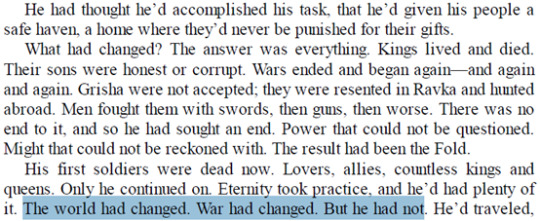
After he snapped and decided that he must rule and that he has to use the Fold, Aleksander pursued his goal single-mindedly. But war changed around him. People moved from swords, to guns, to bombs, but Aleksander’s power was constant, reliable. And then THIS was and Rasmus’ Hajefetla came. The Darkling thought he could give them victory but he HAD his power and couldn’t use it.
But even when everything seems lost, Nikolai fights and is ready to sacrifice everything. Slowly, the Darkling’s view of Nikolai shifts throughout the book.

He sees how Nikolai cares for all his people. How he was strong enough to embrace the monster and to make sacrifices and he helps him. But even then, after the bells are destroyed, he still thinks that he is the best chance his country has and steps back.
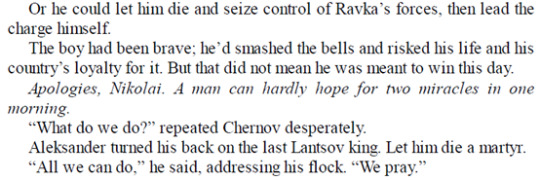
But the second miracle does happen. The Darkling had dismissed Zoya as a girl who couldn’t open her heard and embrace her power, but she opens the door. She saves the day both with her strength and with her mercy. She makes the show of power that The Darkling himself made to do and she exceeds his expectations.
And at that moment, Zoya could have been seen as a monster, a witch, all the things that Grisha had been hated for. So The Darkling chooses to give the push the people need; to be the one to break them out of their shock and push them to the direction that suits Ravka before anyone else does: ‘Sankta Zoya’.

And when he makes a stand in her favor when she gets accepted as a queen:
1) Even though I don’t believe he still thought of Zoya as a pawn at this point, I DO believe that he had realized how showing his allegiance might give him a potential opening to call in a favor if he ever needed it.
2) Helping her makes sense because even he would be able to see that a Grisha who has military, political and religious power and who has immeasurable power that could only grow gives Ravka its best chance.
3) He has the opportunity to further Ravka’s political stability while getting rid of the Apparat, whom he despises both because he betrayed him personally and because he is a rat who keeps endangering the Grisha and even Ravka as a whole.
He used all the influence he had left.
b) EXISTENTIAL CRISIS AND SELF-SACRIFICE
Throughout Rule of Wolves, The Darkling goes through an existential crisis. He is trying to remain the same, to keep to his old practices, but by the end of the book he understands that the world has changed and he has to change in some way too. He does not have a complete change of heart. People are mostly set in their personality by their adulthood and a tiger easily changing its striped after centuries would be completely unrealistic. Neither are his crimes glossed over. But the reasons he sacrifices himself are woven throughout the story.
-A theme throughout the story is that we started in Shadow And Bone from ‘the age of Grisha power is coming to an end’ and went to ‘the age of Saints is upon us’. What is the main difference between Grisha and Saints? It’s faith. It’s the way the ‘saints’ are accepted and worshipped for their power and sacrifice. The Darkling wants to be loved. He wants for his sacrifices to be recognized.


In a single scene we see both his inability to adjust to the world he finds himself in and his need for his efforts to be recognized. Because he DID give his life for Ravka. He did so, from his perspective, when he was killed during the Civil War, but he also did by not having really had peace or REALLY lived his life since he was a child.
In the main trilogy he was bitter about the Otkazats’ya easily turning on Grisha. He was bitter about how Grisha were treated by the rulers of Ravka. The Grisha had to bow but the Saints are the ones that people bowed to. Faith is the only thing that may allow them to stop hiding. So he wants to be a Saint. He didn’t manage to earn it in battle, so he must find another way.
The Darkling approaches The Starless, but even as he tries to have more rally behind him he is disappointed in his new following. During his first POV chapter he says that he will “teach the world awe”. But it’s made clear that his is not enough for him. His followers BELIEVE but their belief is hollow. They are afraid of who he truly is, they barely believe in everything he stood for. They are awed, easily manageable, but they do not care about the Grisha. They do not care about Ravka the way he does. They do not see him when he’s right in front of them, making him want to scream that he is there, that he exists, and when one glimpses behind Yuri’s mask he sees ‘evil’.

What he wants is devotion because of what he’s tried to do, not blind faith. He feels unseen; faded. Moreover, he still hides while he thought he didn’t have to. Initially he thinks that he can finally choose to be himself and to reclaim his true name: ‘The oldest of them: Aleksander. He had no reason to hide his strangeness anymore. Saints were meant to live forever.’ But he falls into old patterns. He is ‘Yuri’; he is in hiding once more.
-The Darkling DOES NOT LOVE HIS POWER in itself. He loves the strength it gives him, the feeling of being special, but he does not enjoy the darkness, despite embracing the color black or having previously chosen dark rooms for himself.
“He wanted to be out of the darkness, back beneath the watery winter sun.”
“He only wished that it wasn’t winter. He wanted to turn his face
to the sun and feel it warm him. The cold frightened him now. It felt like
death, like the long silence of not being, without sense of time or place, only
the understanding that he must hold on, that someday, there would be an end
to the terrible stillness. He’d been a long time in the dark.”
Even in his previous life, he was mesmerized by the beauty of the world.

And now he has to face THE BLIGHT: A consequence to him coming back, which, based on the fact that it expanded THE MOMENT he used his power to kill one of his followers, is connected to him growing stronger and using his power. This power, which is similar to the Fold, is independent of him and untamed in the world and creates wastelands, ruining the country that he tried to save. In fact, it is compared to a vampire; to a creature that needs blood to be sustained. It destroys all the things that Aleksander dehumanized himself to fight for and all the things he found beautiful in the world.
Even when it doesn’t touch HIM, he doesn’t know why; if it’s because this plague recognizes something in him, or if he’s so ruined that it doesn’t have a taste for him. And both scenarios show an alienation from his power. His feelings of being whole because of his power have being tainted by something he had never experienced before.
And how could he, who represents the lack of stars, the darkness, be valued and not just feared?

For the Starless Saint to become the people’s salvation the darkness that spreads across the land must be defeated by his own power of darkness,
In the original trilogy the theme of the Darkling falling into servitude of his own power was touched upon.

In RoW it was furthered. And Aleksander has made his decision:

Never again a servant; not even to his own power.
WITH THE DARKLING’S SACRIFICE:
1) He saves Ravka and allows back into the world and into the fold all the colors and the light that he used to love about it. But more importantly, At some point he mentions that “human life is worth preserving. But human lives? They come and go like so much chaff, never tipping the scales.” By holding back the Blight he ensures that human life is preserved.
2) His arc of existential crisis is resolved because he finds purpose, which he lacked after seeing that he was not enough to win the war and to create by himself the world he had craved) and saves his country in a way that only HE could, even if that wasn’t ruling. The vision Aleksander, the forgotten boy, had is aided in a way that serves the vanity of The Darkling, the eternal being he became.
3) Leigh brings full circle the theme of balance. “You were meant to be my balance”, he had told Alina. But THAT assumption was SO wrong and presumptuous. It was entitled. But finally he makes a sacrifice to be his own balance and to control what he unleashed. He caused pain and he endures pain. He was responsible for the Fold and for the Blight and he counterbalances the distraction they brought to the land and stops them from threatening Ravka.
_________
c) ‘MY NAME IS ALEKSANDER MOROZOVA’.
Some say that The Darkling publically revealing his name was out of character; probably because the only revealed it to Alina and did not want others to know it.
So let’s have a throwback to what we know.
As ‘The Starless’, the Darkling is the only unnamed saint other than the Saint of the Book, who has no memory. The theme of a name being essential to memory is constant throughout Aleksander’s arc
‘A boy’s name given up; almost forgotten.’
“It’s my own name I’m afraid of forgetting.”
In Ruin and Rising, The Darkling dying nameless serves a purpose. Alina gives him the kindness for not giving people a name to extol. He entrusted it to her and she does not betray that trust.
What I find interesting is that, in The Demon in the Wood, Baghra tells him:

He had given his name to Alina who, in a twisted way, was the closest person to his heart at that point, because he considered it his equal and in his twisted way.
To become a saint, to be worshipped, to save Ravka, to not be forgotten he has to share this piece of his heart; of himself. He has to let people read it. He considered Zoya weak because she was afraid of her heard but she was strong enough to ‘open the door’.
After living the way he did and making the choices he made, his heart can never open the same way as hers did, but this is as close as his character could come to it without Leigh glossing over all he’s done.
#the darkling#aleksander morozova#rule of wolves#row spoilers#shadow and bone#I know that no one will read this#but I just love this book so much#long post for ts#the darkling meta#aleksander morozova meta#row meta#rule of wolves meta
93 notes
·
View notes
Note
hi, any advice on timeline and era etc stuff? I have dyscalculia so numbers and measurements are meaningless to me and it’s really difficult to figure out how much time should lapse (on a large scale; time periods, millennia, eras, etc, not stuff like in one persons lifespan) between eras and events, especially in regards to political n social n technological etc changes
Feral: That depends. There isn’t one answer. You’re asking for longer time periods than a generation or a lifetime, but for scale, take what’s happening now. How many calamities, major political events, social trends, and changes in technology (and how we interact with it) have happened in the year 2020? Since the year 2016? Since 2008? Since 2001? How are they grouped together or spaced apart? And these are all working on each other. In the USA where I live, the 9/11 attacks absolutely have a direct causal effect with the politics that led to the 2016 election (actually before that a Supreme Court decision in the 2000 election also had an impact on that result), and the results of the 2016 election impacted how COVID has been handled this year. That’s 20 years, so when we’re looking at longer timeframes, we scale up. We see gaps and groupings and there just isn’t a specific “oh every decade/score/century, these types of events happen.”
To quote a particularly relevant introduction on Wikipedia:
This results in descriptive abstractions that provide convenient terms for periods of time with relatively stable characteristics. However, determining the precise beginning and ending to any ‘period’ is often arbitrary, since it has changed over time over the course of history.
To the extent that history is continuous and not generalized, all systems of periodization are more or less arbitrary. Yet without named periods, however clumsy or imprecise, past time would be nothing more than scattered events without a framework to help us understand them.
Eras, of the non-geological or -cosmological sort, or time periods are culturally determined, completely variable in length, and often overlap. For example, the beginning of the Victorian Era, 64 years, (defined by Victoria’s rule of England) of the Anglo-influenced world overlapped with the Antebellum Era, 78 years, (defined by political and social tensions in the lead up to the American Civil War) of the United States, which is also part of the Anglo-influenced world, and then following the end of the Antebellum Era, was the American Civil War, 4 years, and then the Reconstruction Era, 14 years (the first 2 of which are within the Civil War), which are both fully contained within the Victorian Era. Typically, when you are trying to think about eras, think about political rulership, wars, and large scale trends like artistic styles. It may also be helpful to familiarize yourself with the Three-Age System, which can be applied individually on cultures, rather describing trends for the whole world.
What it really comes down to when we think of eras and time periods is almost like a type of pareidolia. People see groupings of like things happening and put this grouping into a bubble of time, which kinda doesn’t actually exist in objective reality and is more or less a group hallucination on a massive scale. It calls to mind what Zeno’s arrow might have actually been trying to describe - not to say that this paradox is infallible, but it’s an interesting thought exercise, especially once you get into the quantum Zeno effect.
Now that I have fully diverged from the question at hand, we’ll get back to it. Let’s look at one technology type and how much time elapses between developments as well as some tie-in technological, social, and political forces that may be acting on the developments or that the developments might be acting on. I’ll also note how this technology traverses the eras of history as I find that looking at one discrete set over time is easier than just trying to look at the big picture. Let’s look at the history of printing.
(With hopes that it will be easier for you to conceptualize, I will use simplified (aka rounded up/down) timeframes written numerically rather than spelled out or via terms like decade or century so at the very least you can compare length of numbers. I’m also going to link as many Wikipedia articles as I can - I like Wikipedia for this because of its incredible cross-indexing and how it strings relevant articles together into a series, often chronologically. If the numbers are still challenging for you, I will summarize without at the end.)
5,520 years ago, the very first form of printing we know about is done with cylinders rolled over wet clay in Sumer in 3500 BCE, the beginning of the Early Bronze Age.
3,700 years later, woodblock printing is developed in China somewhere around 200 CE/AD, just after the end of the Pax Romana in Europe.
700 years later, the next development of printing is movable type, which is developed in China in 1040. 26 years later, on the other side of the world, in 1066 is the Battle of Hastings and the establishment of the Norman Era of rulership in England, in another 20 years, in 1086, the Domesday Book is hand written in 2 volumes: 1 is 764 8”x15” pages, the other 900 8”x11” pages.
400 years later gives us the Gutenburg printing press that is developed in Germany (at the time in the Holy Roman Empire) in 1440. This is during the Renaissance Era; it’s also the Era of Humanism, and often called the Early Modern Period. Martin Luther will write the 95 Theses less than 80 years later and start the Protestant Reformation, largely thanks to the ability for the theses to be easily copied by the printing press and spread quickly.
75 years later we have etching in 1515. 90 years later, the first weekly “true” newspaper, the Relation, begins printing in 1604.
130 years later we have mezzotint in 1642, which is the start of the First English Civil War, which will last for 4 years. Depending on your preference, the Age of Enlightenment either began 5 years before or 40 years later (unless you’re French).
130 years later we have aquatint in 1772. That is right at the beginning of the American Revolution: 2 years after the Boston Massacre; 1 year before the Boston Tea Party; 2 years before the Intolerable Acts and the First Continental Congress; 3 years before Patrick Henry’s “Give Me Liberty or Give Me Death” Speech (which is printed and shared across the colonies), Paul Revere’s Ride, and the Battle of Lexington & Concord; and finally 4 years before Thomas Paine’s Common Sense is published, the signing of the Declaration of Independence (which is printed and shared across the colonies), Nathan Hale’s execution for treason against the Crown, and Washington’s Crossing of the Delaware.
25 years later lithography is developed in 1796; the year prior Napoleon overthrows le Directoire.
40 years later we have chromolithography in 1837, the year Victoria ascends and the first electric/battery powered locomotive is invented.
5 years later is the rotary press in 1843. The First Industrial Revolution is over.
15 years later is the hectograph in 1860. 1 year later, the American Civil War begins.
15 years later is offset printing in 1875. 1 year before, the first commercial typewriter becomes available. 1 year later is Bell and Watson’s first phone call in 1876.
10 years later is hotmetal typing in 1884.
1 year later is the mimeograph in 1885. 2 years later is Black Monday. 5-10 years later the radio is invented.
20 years later is the photostat and rectigraph in 1907.
4 years later is screen printing in 1911. 3 years later WWI begins in 1914.
10 years later is the spirit duplicator in 1923. The Roaring Twenties.
2 years later is dot matrix printing in 1925. 4 years later is the Great Crash.
10 years later is xerography in 1938, the same year as the first digital computer. 1 year later WWII begins in 1939.
2 years later is spark printing in 1940. 1 year later is the Attack on Pearl Harbor.
9 years later is phototypesetting in 1949. The USSR detonates their first atomic bomb.
1 year later is inkjet printing in 1950. Truman orders the development of the hydrogen bomb. Apartheid becomes law in South Africa.
7 years later is dye-sublimation in 1957. 6 years later, Martin Luther King, Jr. gives his “I Have a Dream” Speech.
12 years later is laser printing in 1969, the summer of which is known for very Very.
3 years later is thermal printing in 1972. The break-in at the Watergate Office Building is this same year and 2 years later Nixon resigns.
14 years later is 3D printing in 1986, the year Pixar Animation is founded and the year after the beginning of the Iran-Contra Affair.
1 year later is solid ink printing in 1987. 2 years later is the invention of the World Wide Web, and the internet as we know it.
4 years later is digital printing in 1991, the same year the USSR dissolved. 2 years before, the Berlin Wall fell.
There have been no significant developments in the history of printing since 1991.
So, let’s look at some averages to help us consume this data. Printing has a history of 5,520 years. It took 3,700 years for another development to occur, and then another 700 years after that - in other words, in the first 4,400 years of printing, there were 3 developments, equalling to an average of 1 every 1,470 years. In the 400 years between 1440 and 1843, there were 7 developments (average of 1 every 57 years). In the next 100 years between 1860 and 1957, there were 14 developments (average of 1 every 7 years but with 1 year having 2 developments simultaneously). In the next 22 years between 1969 and 1991, there were 5 developments (average of 1 every 4 years).
While the general trend is that the more a technology develops, the faster it develops, a trend is not the whole picture. Consider: in the 90 years of 1796-1885, there were 6 developments, making the average 1 every 15 years. In the 85 years of 1907-1991, there were 15 developments, making the average 1 every 6 years. There has not been a development in the past 30 years! There hasn’t been this large of a gap since 1837, 180 years ago.
In general, without numbers, what I think we can see here is that sometimes a certain development, like the printing press, can usher in a new era, and sometimes reactions to what else is happening in the world can pressure someone into developing something new, but often times, most times, when you look at just one thing under microscope over time, why that thing is produced in this era but not that era has nothing to do with the eras in question. When we create time periods, we’re generally doing it after the fact. No one living under the rule of the Roman Empire in 100 CE was thinking to themselves, “ah yes, the Pax Romana, when we have peace for 200 years!”
So applying all of this to worldbuilding, I see two methods that you can use together, to create a timeline that makes sense and is useful to your storytelling.
Method the first, arbitrarily create time bubbles of various lengths - I recommend the use of index cards for this. Index card A is 7 years; card B is 150 years; card C is 47 years and so on. Then take big ideas and put those onto your cards; use inspiration from real history. “I want the War of the Roses but condensed into 7 years.” “A Mongolian Empire type expansion happens over 150 years.” “There’s a 47 year Renaissance of fascination with Ancient History.” Then take those cards, lay them out into roughly the order in which you want them to occur, maybe overlap them a little, especially if they are happening in different parts of your world. Remember that time is not actually linear and things do not happen in a linear, narrative manner in the real world, so there can be wild leaps; there can be regressions; and you don’t have to follow real world history here - though you may want to the first time as a helpful exercise. It’s also very unlikely that you will ever have to know exactly how many years are between the eras or what the interstitial eras are.
Method the second, list all the major historical events, inventions, etc that you want/need to have happened. Start with what directly impacts your main characters and plot. “MC’s great-grandfather is humiliatingly defeated in battle, casting a pall of embarrassment across the generations following and ultimately putting the MC in the position that she starts in.” “The first great wizard codifies the 10 Laws of the Important Magical Order that the MC is trying to earn her place in.” Put these in an order that makes sense to you, keeping in mind that it’s not going to be a perfect progression. Again, you don’t need to know how many years there are between each event, but if great-grandpa was the last in a very long line of family members allowed to be in the Important Magical Order, then that IMO had to be founded first, and there would probably be some events between these two.
Then, when you have your two timelines, one of era/time periods and one of events, graft them together. You may have to shift some things to make it work, but consider the “feeling” or theme of the eras and what events make sense in relation to those feelings. Additionally would this event be more suited to happening when the era is new and is finding itself or when the era is solidly on course or is it an event that would completely shatter the illusion of the era and usher in a new one? Does it make sense for your great wizard to be codifying her laws in the expansion of an empire, or during a period of relative peace and prosperity in an established empire, or before empires were a thing in this world and few traveled far from home?
Tex: I’ve found that historically important events are caused for roughly two reasons - one, an invention that others capitalize on for an exponential growth into other inventions/social uses, and two, someone got sick of someone else’s crap and did something about it. Natural disasters will happen with enough frequency to be noted (see: the Little Ice Age, the Black Death, and the 1883 eruption of Krakatoa), although there’s little prediction for them because of the lack of observable build up in activity.
To pull from Feral’s timeline of examples, writing is popularly attributed to being invented in Sumer, 5,520 years ago - it’s our oldest found example, at any rate, though I’ve learned to never say never on archaeological discoveries.
What prompted this invention? Things rarely occur out of the blue, and rarely without interaction from other domains - where could writing have come from? Maybe art? What about from the creation of a tool, a reuse of certain skill sets? Something else we haven’t thought of yet?
So that’s one half of the question. But what about the other half - what did people around the inventor (multiple inventors?) think of this new thing? Deliberately associating a particular sound with a particular object - even a 2D object like pressing shapes into a piece of clay - and then standardizing it, is no mean feat. How did this agreement even happen? Were there arguments about how to do these graphemes, how best to shape them? What about which phoneme to each?
I doubt Sumerian cuneiform was created in a day, and likewise I doubt that language popped into existence on a whim. To keep pulling from this example, language composition has a strong effect on how we interact with our environment (University of Missouri-St Louis Libraries), but it conversely is also deeply affected by the environment its users create (Nature).
Because of this, I think it’s easier to work from a different angle - figure out what your major events are, and what eras you’re covering. If these major events also define an era, that’s even better! Working out how long everything each thing takes is ultimately a bunch of minor details, so it’s up to you how much your plot actively needs them, rather than decoration to your story meant to amuse you more than your audience.
58 notes
·
View notes
Photo
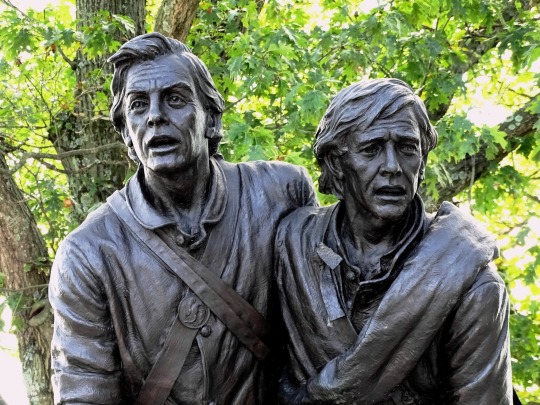
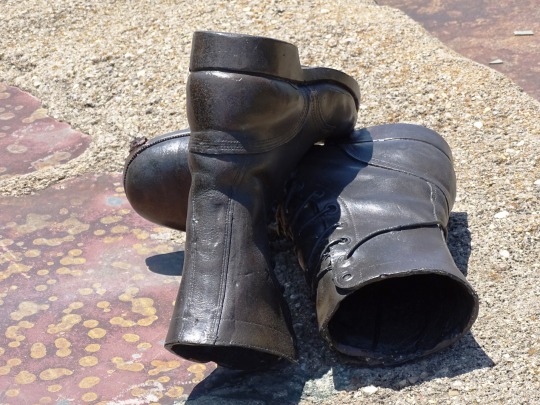

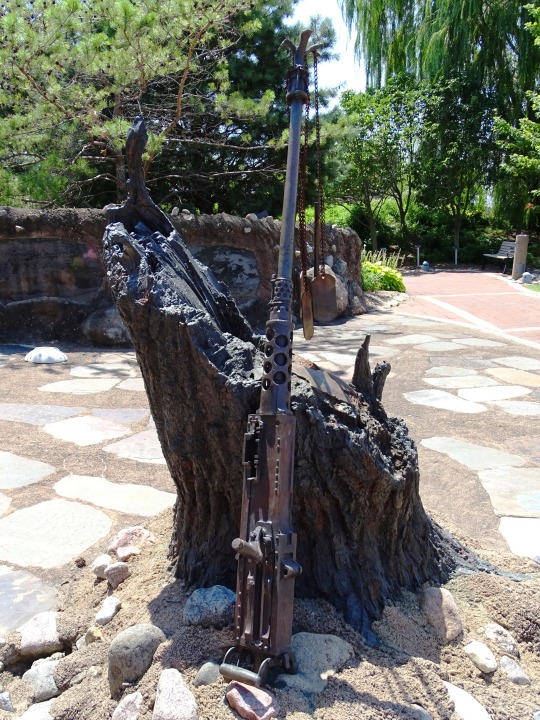

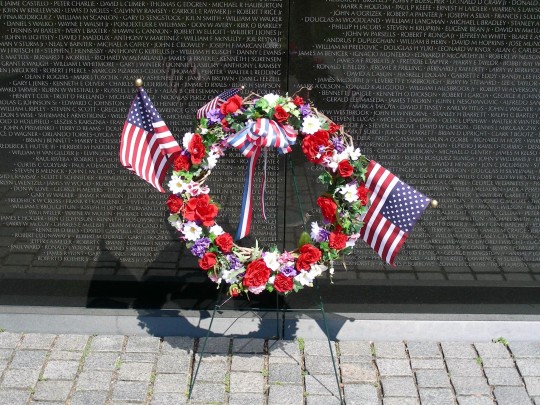
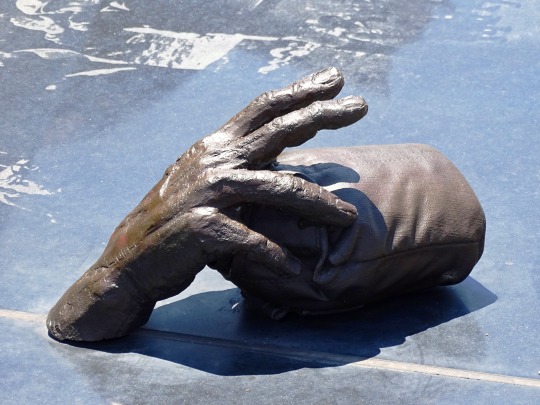
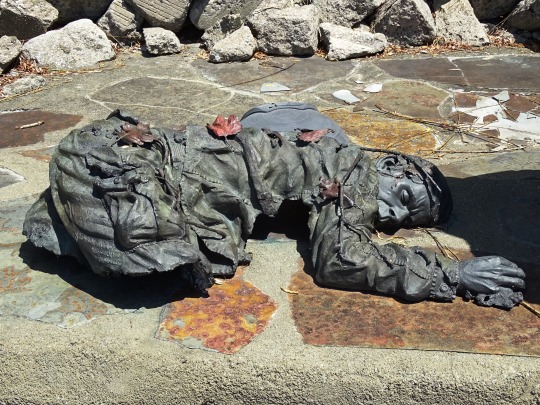

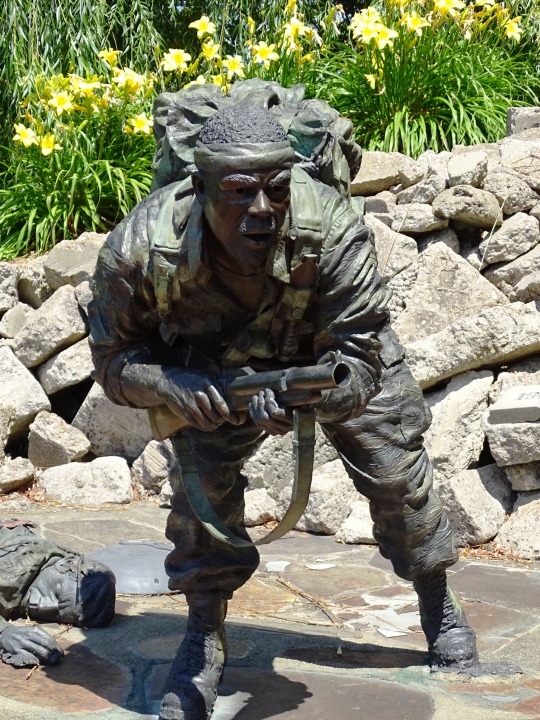
Memorial Day
Memorial Day on May 29 conjures images of hamburgers, hot dogs, swimming pools, and summertime for many Americans. But the last Monday in May serves, most importantly, as a time to honor those who died while fighting in the U.S. Armed Forces. It’s a holiday steeped in somber American history and tradition. The day actually began as “Decoration Day,” following the Civil War, when mourners placed flowers on the graves of Union and Confederate soldiers. Yes, Memorial Day has also come to signify the “unofficial” start of summer, but let’s remember the heroes who made it all possible.
When is Memorial Day 2023?
Men and women who’ve served and sacrificed their lives in the U.S. Armed Forces are honored on Memorial Day on May 29.
History of Memorial Day
The Civil War ended in the spring of 1865 when Robert E. Lee surrendered the last major Confederate army to Ulysses S. Grant at the Appomattox Court House on April 9. Over 620,000 soldiers died in the four-year conflict. General John A. Logan of the Grand Army of the Republic (an organization of Union veterans) would eventually select May 30, 1868, as a day to pay tribute to the fallen:
“The 30th of May, 1868, is designated for the purpose of strewing with flowers, or otherwise decorating the graves of comrades who died in defense of their country during the late rebellion, and whose bodies now lie in almost every city, village, and hamlet churchyard in the land…”
Logan apparently chose May 30 because flowers would be in bloom all over the country. By the end of the 19th century, Memorial Day ceremonies were being held on May 30 throughout the nation. States passed proclamations, and the Army and Navy adopted rules for proper observance at their facilities.
The crowd attending the first Memorial Day ceremony at Arlington National Cemetery was approximately the same size as those that attend today’s observance — about 5,000 people. Small American flags were placed on each grave — a tradition still followed at many national cemeteries today. In recent years, the custom has grown in many families to decorate the graves of all departed loved ones.
By 1890, each Northern state had made Decoration Day an official holiday. But this was not the case in the South, where states continued to honor their dead on separate days until after the First World War.
The May 30 date held for decades. But, in 1968, Congress passed the Uniform Monday Holiday Act, which established Memorial Day as the last Monday in May in order to create a three-day weekend for federal employees. The change took place in 1971. The same law also declared Memorial Day a federal holiday.
Memorial Day timeline
1864 Beginning of a Tradition
Women from Pennsylvania place flowers on the graves of fallen soldiers after the Battle of Gettysburg.
May 5, 1866 Birthplace of Memorial Day
Waterloo, New York, begins hosting an annual community service in remembrance of soldiers whose lives were lost.
May 5, 1868 It’s Official
Major General John A. Logan issues General Order No.11, making the day official.
2020 Virtual Solidarity
The organization American Veterans (AMVETS) holds a virtual motorcycle rally in honor of Memorial Day.
Traditions of the Day
Many Americans observe Memorial Day by visiting cemeteries or memorials, holding family gatherings, and participating in parades. It’s the three-day weekend that kicks off the summer season and the time for hanging out at the beach and lakes, and barbecuing with friends and family. But Memorial Day is also the most solemn American holiday — a day to remember those who made the ultimate sacrifice while defending their nation.
Towns and cities across the country host grand Memorial Day parades every year, often featuring senior veterans and military personnel. Some of the biggest parades take place in New York, Chicago, and Washington, D.C. Cemeteries and memorials are also visited by Americans, with some citizens wearing or holding red poppies to symbolize those who have fallen in war. This tradition has been around since World War I. Weekend trips and parties are also arranged to balance out the somberness of the day and welcome the summer.
By the Numbers
620,000 – the number of soldiers who died on both sides of the Civil War.
1868 – the year when President James Garfield delivered a very long speech on Memorial Day.
2500 – the number of motorcyclists who participated in the first Rolling Thunder rally.
$1.5 billion – the number of dollars typically spent on meat and seafood in preparation for Memorial Day weekend.
60% – the percentage of American households who attend or host a barbecue on this day.
1.5 million – the number of people who watch the National Memorial Day Parade.
900,000 – the number of people who gathered for the Rolling Thunder Memorial Day motorcycle rally in 2019.
260,000 – the number of graves at Arlington National Cemetery adorned with flags in 2019.
45 million – the number of men and women who have served in a time of war for the U.S.
3 P.M. – the time of day when a moment of silence is observed by Americans throughout the country on this day.
How to Observe Memorial Day
Pay your respects
Participate in the National Moment of Remembrance
Fly the flag
Lay flowers on the grave of a family member or friend who died while serving. If you don't personally know any fallen soldiers, visit a local cemetery anyway. After all, they made the ultimate sacrifice for you.
By doing so, you'll be joining millions of Americans in national unity to honor Memorial Day for what it truly is — a day to remember those who laid down their lives in service of their country and its citizens.
If you have an American flag at home, be sure to fly it at half-mast until noon, then raise it to full mast for the rest of the day. The practice of lowering and then raising the flag has been observed for over 100 years to symbolize America's persistence in the face of loss.
5 CREATIVE WAYS TO DECORATE FOR MEMORIAL DAY
Unfurl those flags
Line your walkway with mini flags
Red, white, and blue layered cake
Stars and Stripes windsocks
Symbolic flowers
Often people store their American flags and raise them only during patriotic holidays. This is definitely one of those days.
Nothing honors our deceased veterans like dozens (or even hundreds) of flags in your front lawn and entryway.
It’s a decoration you can eat.
It’s festive, fun, and patriotic. Need we say more?
Even if you haven’t lost a loved one who served in the military, you can still honor the fallen with flowers at home. Red, navy, and blue dahlias combined with white rose silk flowers can make a stunning visual combination.
Source
#Maryland State Monument by Lawrence Monroe Ludtke#original photography#Gettysburg National Military Park#Community Veterans Memorial#Munster#Indiana#Pennsylvania#Europe Monument#Pacific Monument#Omri Amrany#A Soldier's Sacrifice by Julie Rotblatt-Amrany#Vietnam Veterans Memorial by Maya Lin#Washington DC#summer 2019#2009#free admission#tourist attraction#landmark#architecture#cityscape#Memorial Day#29 May 2023#last Monday in May#MemorialDay
2 notes
·
View notes
Text
A few fun notes I’ve picked up on the Crusades, as would be relevant to Nicky and Joe, courtesy of leaving Great Courses lectures on in the background while doing other stuff (meaning if you’re a huge fan of the history of the Crusades you definitely know more than me):
- Nicolò di Genova could have been one of several, not necessarily mutually exclusive things before embarking on the Crusade - the second son of a wealthy/noble family (it would explain how he could afford the journey and weapons/armor), a poor brigand (one reason the Pope called the Crusades was to redirect European infighting and banditry) and/or a devout Christian who was spiritually moved by Pope Urban II’s call to arms. The devout option does not necessarily preclude either of the previous two possibilities, because the Pope promised total forgiveness of ALL sins (before and during) committed in one’s life and during the Crusades, so those who may have turned to banditry out of desperation but felt guilty for their immortal souls could have also been lured by the promise of spiritual reward, not just material reward.
- I’m going to go out on a limb and say Nicky was part of the Princes’ Crusade in 1096, the official one that Pope Urban wanted and I distinguish because there was a thing called the Peasants Crusade before of people who rose to the call but were, unfortunately, all non-fighting men, peasants, kids, fanatics, etc. and it went... badly. Very badly. The “crusaders” themselves (which means “cross bearers” btw) were pretty awful and killed a lot of innocent people on their way to the Holy land, and then they were wiped out when they got to Turkey anyway, and likely Nicky would be aware of these events (or even saw the piled bodies on his way to Jerusalem, if you want to go for a dramatic scene).
I’m guessing Nicky was with the Princes’ Crusade because he actually got to the Holy Land AND again, because he’s got armor (according to the comic flashbacks) which was pretty damn expensive. (A Watsonian rationale, the Doylist one is that Rucka was going for the image of foreign knights fighting in full plate and may not have thought out all the class and wealth implications of them having that armor). Oh, and Nicky if he traveled with the Princes’ Crusade in 1096 would have spent some time in Constantinople (November-April) while on his way there.
- The Crusaders captured Antioch before they made it to Jerusalem. I’m not sure The Old Guard clarifies which battle he and Joe first encountered each other in, it might have been Antioch, but I’m going to say it wasn’t, for several reasons. One, because of the credits that lists 1099, the year after, when Jerusalem fell, which was the last year of the First Crusade. (The other famous crusade, the Second Third Crusade of Orlando Bloom’s “Kingdom of Heaven” fame isn’t for almost 50 years after that.) And further, while it’s possible that Nicky fought Joe in Antioch before the Crusaders even made it to Jerusalem, but the push-pin in the map is also in Jerusalem and it’s where the most famous events of the First Crusade happened (and I’m not sure Rucka would be able to resist), so just from a dramatic standpoint too I think they probably fought in Jerusalem.
- To just couch it in a scene for a second, the Crusaders seeing Jerusalem for the first time was, by all accounts, breathtaking. It was a profoundly spiritual moment for these people who had taken up arms to fight for their God and traveled for years across strange lands and lost many of their compatriots to the fighting in Antioch as well as starvation/thirst/exhaustion/disease along the way, to reach this holiest of holy sites in the Christian canon.
- Unfortunately, the sight of Jerusalem might be the last moment of beauty we can expect from the European Crusaders. The accounts of the sack of Jerusalem are horrifying. The Crusaders laid siege to Jerusalem for just over a month, and once inside the gates, they massacred every single person in the city, until blood flowed through the streets.
- (Side note: if Nicky didn’t arrive with the main Crusader force coming over land through Turkey, he probably arrived instead with Genoese merchants who also brought the supplies needed to make the siege engines that broke through the walls, so it is possible Nicky was with them and came by boat, in which case he may feel a different kind of guilt for the atrocities that followed.)
- Having claimed the city, the Crusaders established the Kingdom of Jerusalem which would endure just barely over a hundred years. There would be constant fighting between Seljuks and the Crusaders throughout that century, complicated alliances between the Crusaders and the Seljuk’s rivals, the Fatimid Caliphate. Basically, you’d need to be a scholar or read something by a scholar who understands this much better than me to unwind it all.
When did Joe and Nicky meet in all of this? Is the Siege of Jerusalem the setting of their first mutual murder of one another? Or did they meet at a later battle? A lot of that is up to the writer, because based on the line about how they’d been taught to hate one another, one could take away that they’d been on either side of the conflict for a while, at least long enough to build up some animosity towards the other side, before they encountered each other. Or, one could take the line to mean that Nicky and Joe met early in the conflict, and had only the hatred they’d been taught driving them to fight.
Certainly the clash of the Franks, as the Seljuks called them (a word that is still found as a root for “foreigner” in Arabic to this day) or the Saracens, as the Christians called them, was a moment that was not, shall we say, hampered by sympathy on either side. The men of the other army must have been foreign and terrifying to both sides, both saw the other as infidels to the true faith, both had more or less a free pass by their religion and circumstances to not even see the other side as human (but, let’s remember, the Europeans were the invaders and the atrocities they committed are too lengthy and horrifying to go into here).
If Nicky and Joe had stayed in the Levant throughout the events of the following centuries of Crusades (perhaps together now? perhaps still on opposite sides for some time?) they could have been caught up in a rich and complicated world of the clash of civilizations between Europe and the Middle East, Christianity and Islam, met major historical figures like Richard the Lionheart and Saladin (or, An-Nasir Salah ad-Din Yusuf ibn Ayyub if we’re being accurate) the latter of which is one of the greatest examples of chivalry the world has ever known, to an extent that was hailed even by Europeans (seriously, it’s some Hollywood-level stuff, Saladin is amazing and would be the obvious hero in any historical fiction set during the Second or Third Crusade, I could see Yusuf sticking around just to serve him and Nicky even switching sides to do so, especially compared to the leadership on the European side and bastards like Raynald of Châtillon, but again, for a fun intro to these events watch “Kingdom of Heaven” with a heavy grain of salt).
A few final notes, before this becomes its own lecture on the Crusades. With regards to homophobia, it might not have been quite as present as many modern readers would assume. And you might be surprised by who would have been more OK with it.
- On the European side, homosexuality was a sin, sure, but pretty much all non-procreative sexual practices were a sin and it wasn’t as fiercely persecuted in the early 11th century as it would come to be later. This is not to say homosexuality was celebrated, but the punishment you’d receive was basically a civil punishment for being caught, needing to do penance for a few months to a year, not execution or torture or anything like that.
- And let’s remember throughout history, men have had few limitations enforced on their sex lives as long as they also fulfilled their duties to their families and the Church and that going on Crusade meant all of your sins were wiped away, before, during, and after (which is probably what led to the uninhibited nature of the atrocities committed by the Crusaders and I mean seriously, even the Pope who ordered the Crusades was horrified when he heard what happened).
So what I’m saying is, even if someone like Nicky was worried about going to Hell for having sex with men (and really, it would not be the #1 sin to be concerned about by any means in those times) he wouldn’t have to worry specifically while on Crusade. He’s in the clear at least as far as his immortal soul goes, though social censure could be another matter (assuming everyone else even cared about social censure too). Actually, it would be funny if Nicky’s generally relaxed demeanor in the modern era around murders and stuff is because as far as he’s concerned, he’s still got that Papal order saying all his sins are cleared because he joined the Crusades, lol.
- Meanwhile, on Joe’s side, we’re still in a time period that’s called the Islamic Golden Age where social strictures are relatively relaxed compared to what they’ll be at other points in Islamic history (sweeping generalization! please take it as such!) but it’s worth noting that Abu Nuwas, one of the most famous and acclaimed Islamic poets, wrote a ton of love poetry in the 700s and a not inconsiderable portion of that love poetry was devoted to homosexual love. Meaning, yeah, Yusuf wouldn’t just be able to quote poetry at Nicolò, he could quote specifically gay poetry at Nicolò, from one of his culture’s most renowned poets.
Similar to Europe, if my research is correct, homosexuality was pretty accepted, at least it’s not a high-priority punishable crime for men of privilege during this era the way it would be in some later eras. I don’t want to expound much more on Joe’s side because it’s definitely the one I have less knowledge of and authority to speak about but I will leave you, if you’ve made it this far, with the fact that being two men in love with each other when they met was much less of a serious issue than being two infidels (to the other’s religion) would have been, from a social standpoint.
#the old guard#tog meta#history#joe x nicky#nicky x joe#LONG post#also if someone has an authoritative biography of these guys somewhere PLEASE SEND IT TO ME#I'm making some pretty big leaps here like Joe being on the Seljuk side but that's only based on the date and location nothing biographical
61 notes
·
View notes
Text
Tuesday, July 6, 2021
Canada Battles More Than 180 Wildfires With Hundreds Dead In Heat Wave (NPR) Emergency responders in Canada are currently battling more than 180 wildfires in British Columbia amid an intense heat wave that has left hundreds dead in the Pacific Northwest. About 70% of the active fires were likely caused by lightning strikes, according to the British Columbia Wildfire Service’s dashboard. Chris Vagasky, a meteorologist with the company Vaisala, says a lightning detection network uncovered more than 700,000 lightning strikes in the area between June 30 and July 1. The fires come amid a massive heat wave for the region.
Canada, US are easing pandemic border-crossing restrictions (AP) Pandemic restrictions on travel between Canada and the U.S. began to loosen Monday for some Canadians, and Prime Minister Justin Trudeau said plans to totally reopen the border would be announced over the next few weeks. Canadian citizens and permanent residents who have had a full dose of a coronavirus vaccine approved for use in Canada can skip a 14-day quarantine that has been a requirement since March 2020. Eligible air travelers also no longer have to spend their first three days in the country at a government-approved hotel. Restrictions barring all non-essential trips between Canada and the United States, including tourism, will remain in place until at least July 21.
Summer swelter trend: West gets hotter days, East hot nights (AP) As outlandish as the killer heat wave that struck the Pacific Northwest was, it fits into a decades-long pattern of uneven summer warming across the United States. The West is getting roasted by hotter summer days while the East Coast is getting swamped by hotter and stickier summer nights, an analysis of decades of U.S. summer weather data by The Associated Press shows. State-by-state average temperature trends from 1990 to 2020 show America’s summer swelter is increasing more in some of the places that just got baked with extreme heat over the past week: California, Nevada, New Mexico, Arizona, Utah, Oregon and Colorado. The West is the fastest-warming region in the country during June, July and August, up 3 degrees on average since 1990. The Northwest has warmed nearly twice as much in the past 30 years as it has in the Southeast.
Collapsed Florida condo demolished ahead of storm (Reuters) The partially collapsed Miami-area condo where 24 people are confirmed dead was demolished on Sunday night, ahead of the possible arrival of Tropical Storm Elsa. Search-and-rescue efforts for 121 people missing have been suspended. Miami-Dade County Mayor Daniella Levine Cava told reporters earlier on Sunday that rescue efforts would resume after the demolition, noting it was 11 days since the collapse.
Loved and decried, El Salvador’s populist leader is defiant (AP) In the narrow, gang-controlled alleys of the Las Palmas neighborhood, struggling Salvadorans are untroubled by actions of their president that so infuriate his critics. They are not bothered by Nayib Bukele’s dictatorial maneuvers—sending armed troops into congress to coerce a vote, or ousting independent judges from the country’s highest court, paving the way to control all branches of government. They praise his relentless attacks on the politicians who governed El Salvador for nearly 30 years before him, and the elites who benefited from their rule. In this neighborhood they are grateful for the boxes of food staples they’ve received from Bukele’s government during the pandemic. Adults proudly pat their shoulders and say they got both doses of the COVID-19 vaccine long before most other people in Central America. For all the observers and critics who condemn a dangerous concentration of power by a charismatic leader who sports down-home blue jeans and leather jackets, Bukele enjoys an approval rating of more than 90% among people who saw three of four previous presidents jailed or exiled for corruption. “They talk about democracy... I don’t know what else,” said Julio César López, 60, a street artist in Las Palmas. “It makes me really happy that they’re kicking out that class of people.”
Fraud Claims, Unproved, Delay Peru’s Election Result and Energize the Right (NYT) They showed up for the rally by the thousands in red and white, the colors of their right-wing movement, swapping conspiracy theories and speaking ominously of civil war. On the stage, their leader, the presidential candidate Keiko Fujimori, let loose on her headline issue: election fraud. Though electoral officials say her opponent, the leftist union leader Pedro Castillo, leads by more than 40,000 votes with all the ballots counted, they have yet to declare a victor a month after the polls closed, as they consider Ms. Fujimori’s demand that tens of thousands of ballots be thrown out. No one has come forward, even weeks later, to corroborate Ms. Fujimori’s claims of fraud; international observers have found no evidence of major irregularities; and both the United States and the European Union have praised the electoral process. But Ms. Fujimori’s claims have not only delayed the certification of a victor, they have also radicalized elements of the Peruvian right in a way that analysts say could threaten the country’s fragile democracy.
Britain plans to end legal mandates for masks and social distancing on July 19, Boris Johnson says (Washington Post) Boris Johnson on Monday announced that Britain was set to soon end virtually all government mandates to control the spread of the coronavirus, telling people that in two weeks it would likely be completely up to them whether to wear a face mask or socially distance. At an evening news conference, the British prime minister said England was ready to move beyond one of longest, most restrictive series of lockdowns on the planet, turning away from legally binding rules to personal responsibility. He cautioned that the pandemic was not over, but it was time for restrictions to end soon. If the current trends hold, and Johnson suggested they would, then he expected the full reopening for July 19.
Lobsters’ feelings loom large as British Parliament debates animal welfare bill (Washington Post) How does a lobster feel when it’s dropped into the boiling pot? The British Parliament wants to know. Is an octopus sad, sometimes? Does the squid learn its lessons? The bee feel joy? The earthworm anxiety? The peers in the House of Lords are currently debating the matter. These questions arise because Prime Minister Boris Johnson is trying to make good on his electoral pledge to enshrine into law the idea that animals are “sentient beings,” meaning the government would be obligated to not only safeguard creatures’ physical well-being but also take into account their feelings—of pleasure, pain and more. The Animal Welfare (Sentience) Bill is a potentially sweeping piece of legislation that could require all arms of government—not just the agriculture ministry—to consider animal sentience when forming policy and writing regulations. The implications could be moral and profound, supporters hope—or cumbersome and bureaucratic, critics say, with some seeing a power play by vegan activists and animal rights radicals.
Indian dowries still common despite being illegal (BBC) A new World Bank study has found that dowry payments in India’s villages have not decreased over the past few decades even though the practice was made illegal in 1961. The researchers found that in 95% of the 40,000 marriages that took place in rural India between 1960 and 2008, dowry was still paid. Paying and accepting dowry is a centuries-old tradition in South Asia where the bride’s parents gift cash, clothes and jewellery to the groom’s family.
80 people feared missing in deadly ‘tsunami’ mudslide in central japan (CNN) Japanese rescue workers continued to search for survivors Monday, two days after a devastating “tsunami” of mud swept through a coastal city, killing at least three people and leaving 80 feared missing. Of the people currently unaccounted for, it’s possible that some may not have been in the city at the time of the mudslide, a city official said.
Malaysians suffering amid lockdown fly white flag for help (AP) When Mohamad Nor Abdullah put a white flag outside his window late at night, he didn’t expect the swift outpouring of support. By morning, dozens of strangers knocked on his door, offering food, cash and encouragement. Malaysia’s nationwide lockdown to curb a coronavirus surge was tightened further on Saturday, banning people in certain areas from leaving their homes except to buy food and necessities. It lurched Mohamad Nor into desperation. He ekes out a living by selling packed nasi lemak, a popular dish of coconut milk rice with condiments, at a roadside stall every morning, but that income has vanished and government aid was insufficient. The white flag campaign that emerged on social media last week aims to help people like Mohamad Nor, who is 29 and was born without arms. By chance, he saw the campaign on Facebook and decided to try to seek help. “It was so unexpected. So many people reached out to help, support and also encouraged me,” Mohamad Nor said, sitting in his dingy room amid boxes of biscuits, rice, cooking oil and water that were swiftly donated to him. He said kind Samaritans offered to help pay his room rental and that the assistance should be enough to tide him through the next few months.
New Zealand records warmest-ever June as ski fields struggle (AP) New Zealand has recorded its warmest June since recordkeeping began, as ski fields struggle to open and experts predict shorter southern winters in the future. A range of factors led to the record, including more winds coming from the milder north rather than the Antarctic south, and unusually warm ocean temperatures, said Gregor Macara, a climate scientist at the government-owned National Institute of Water and Atmospheric Research. He said the vagaries of weather will change from month to month. “But the underlying trend is of increasing temperatures and overall warming,” Macara said.
Nigerian Baptist Students Kidnapped in Kaduna (CT) More than 100 students at a Christian boarding school in Nigeria’s northern state of Kaduna were kidnapped early Monday morning. Shooting wildly, armed assailants breached the walls of Bethel Baptist High School in Maraban Rido on the outskirts of the state capital, Kaduna, at about 2 a.m. on July 5 and took students in the school hostel away at gunpoint, area residents told Morning Star News (MSN). Efforts were still underway to determine exactly how many students were abducted. A Bethel teacher told Agence France-Presse (AFP) that 140 students were kidnapped while 25 students escaped, but area residents living close to the school told MSN that 179 children were abducted of which only 15 escaped. The attack was the fourth mass school kidnapping in Kaduna state since December, according to AFP.
2 notes
·
View notes